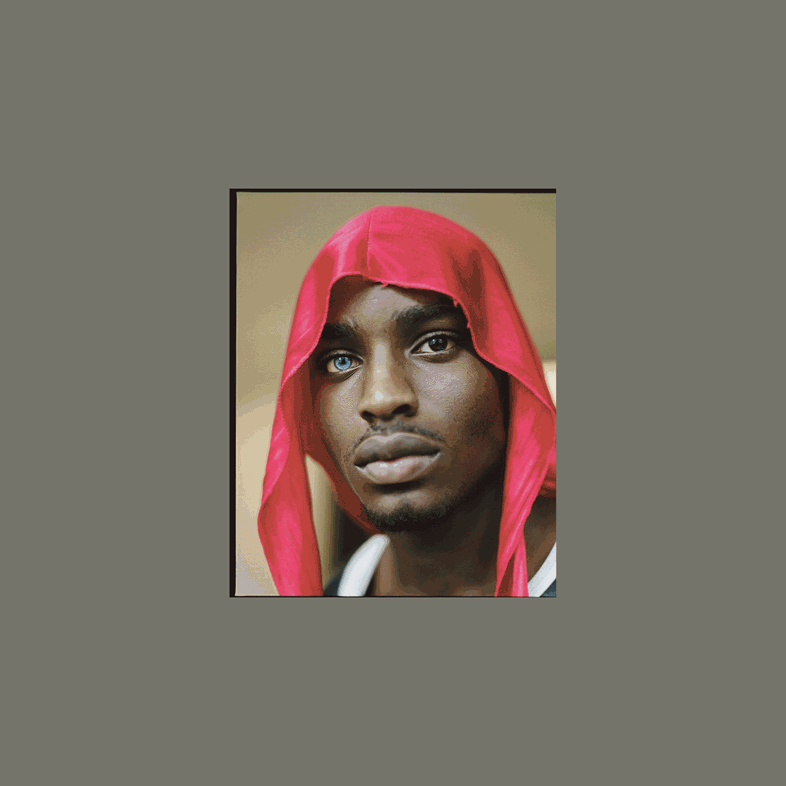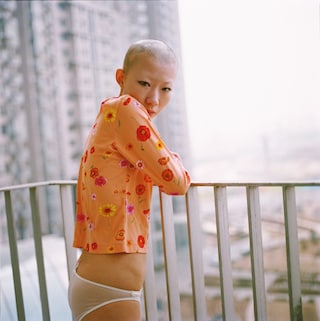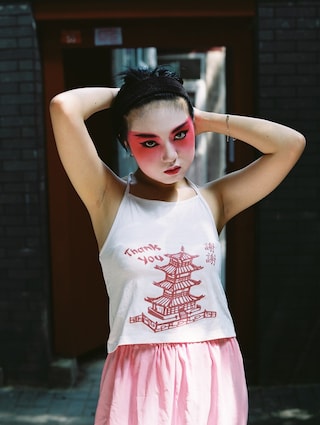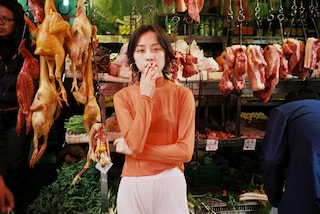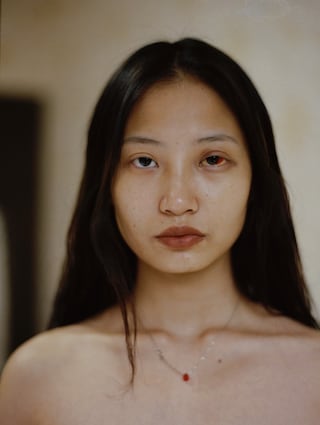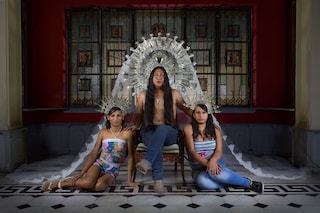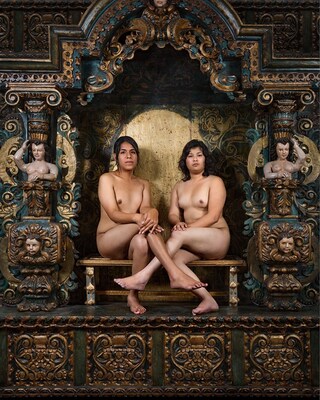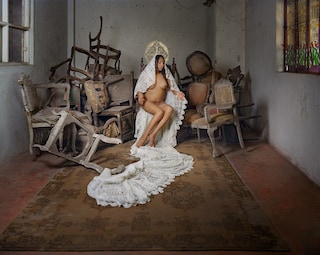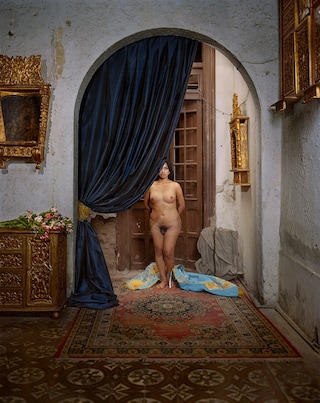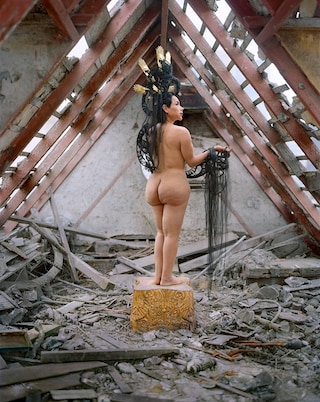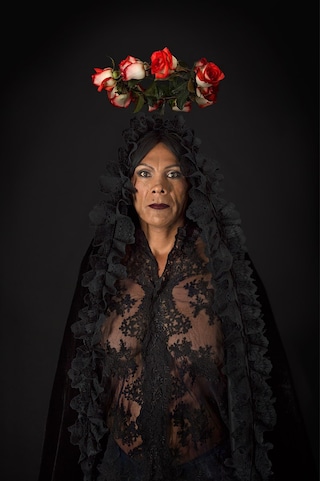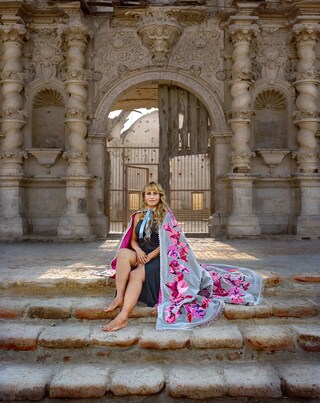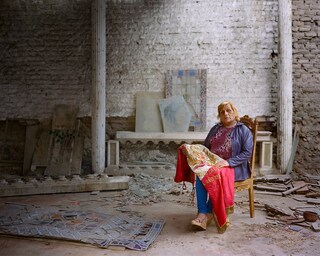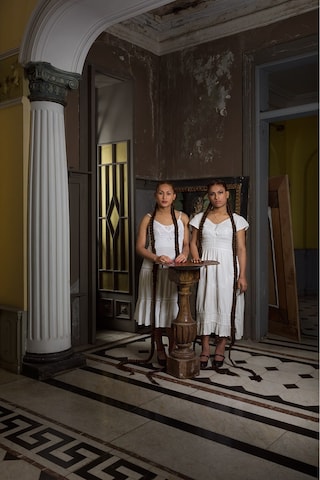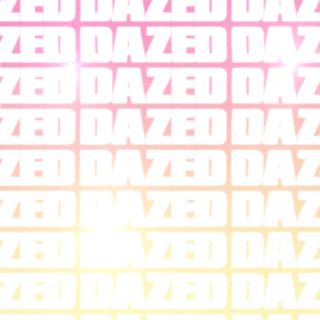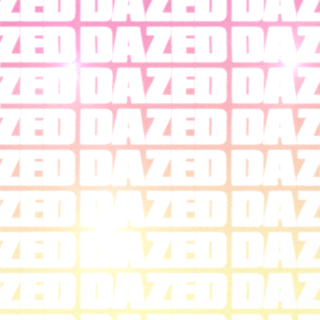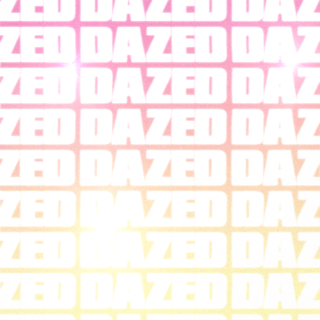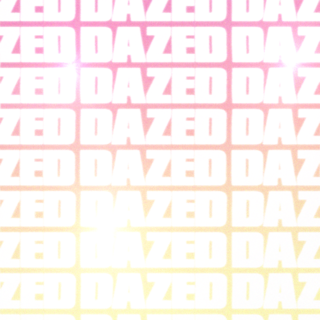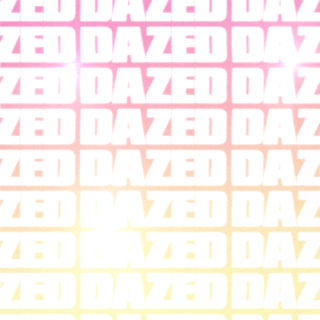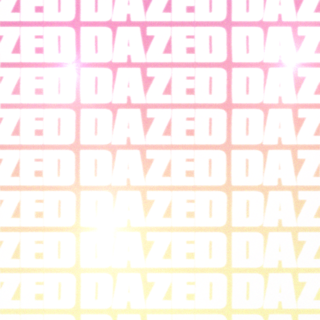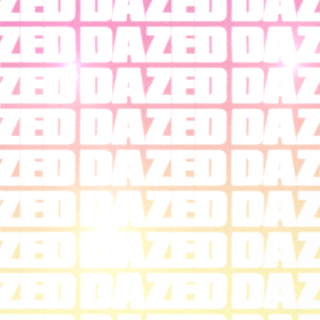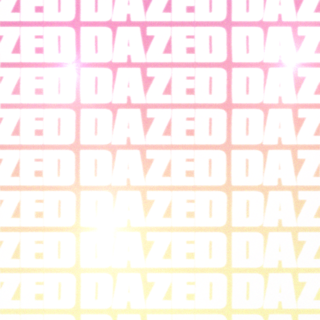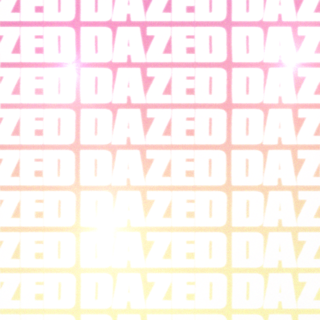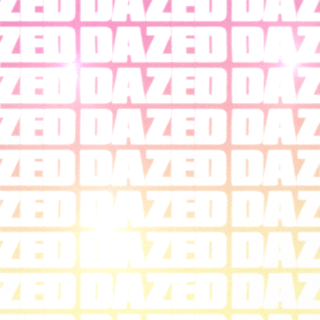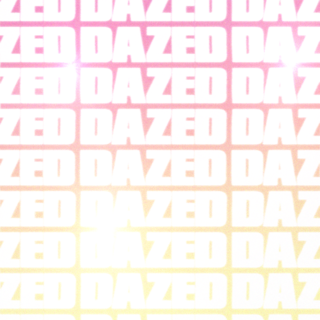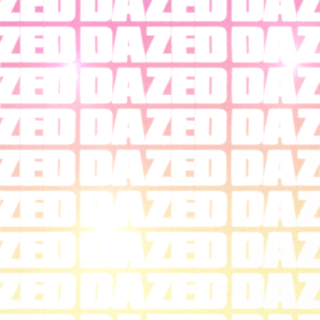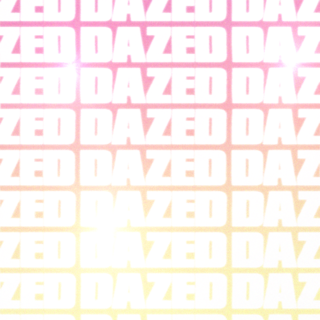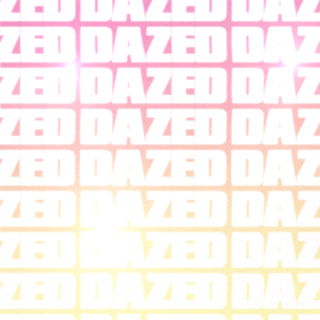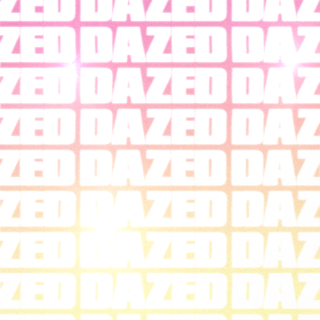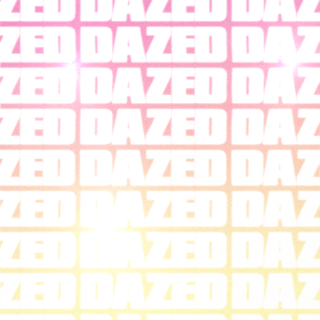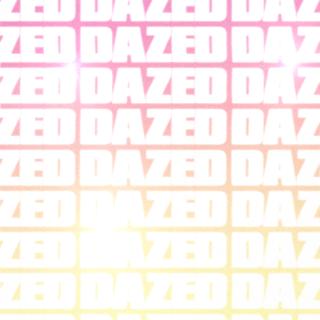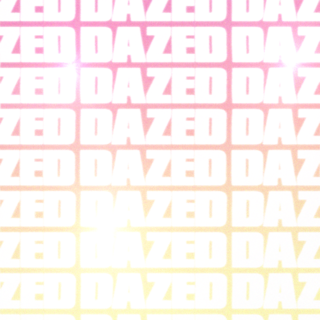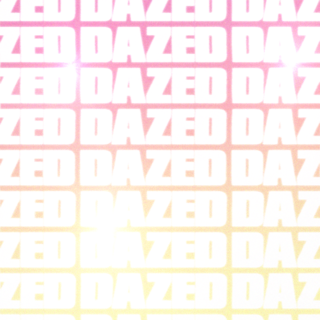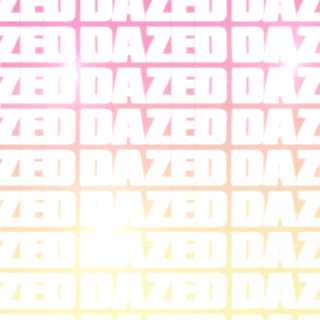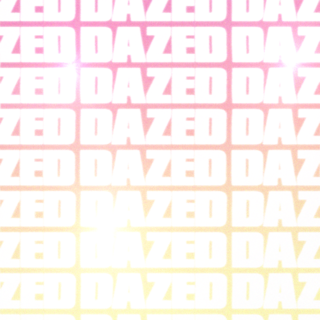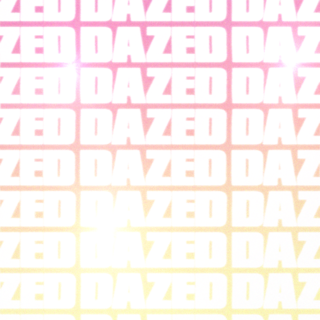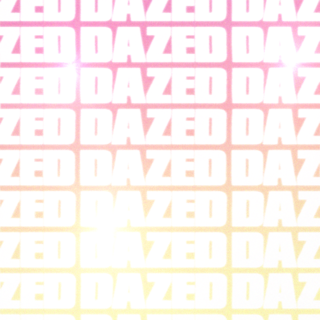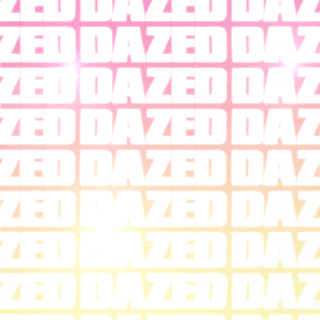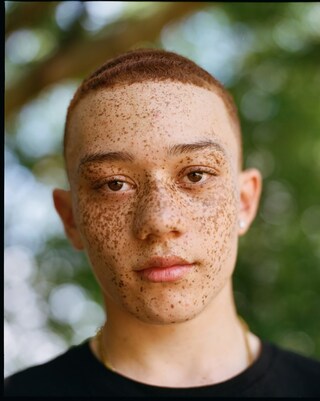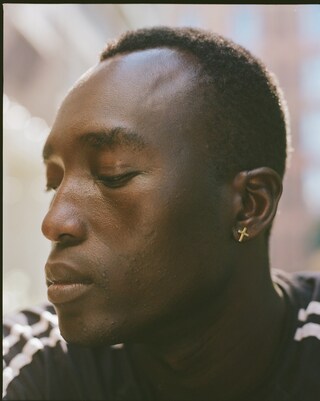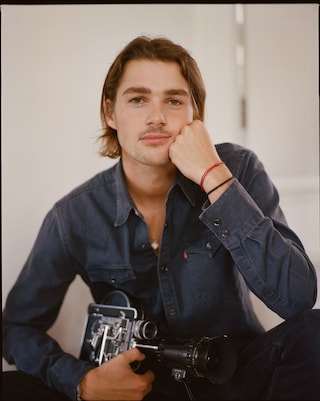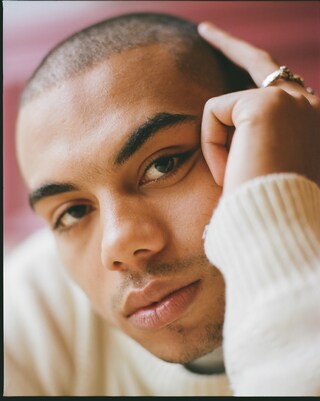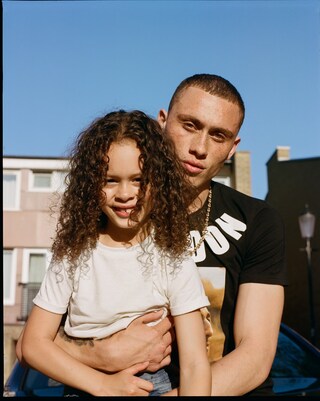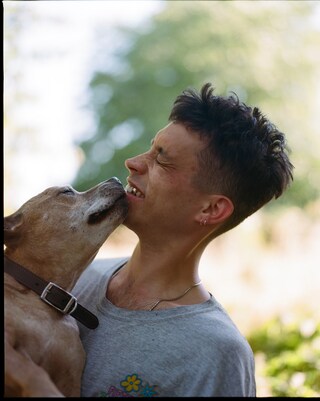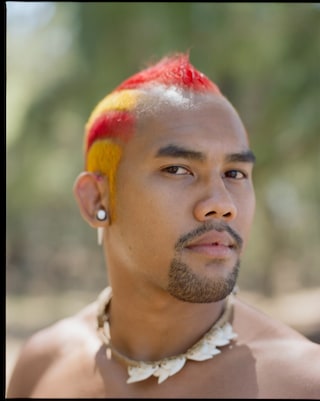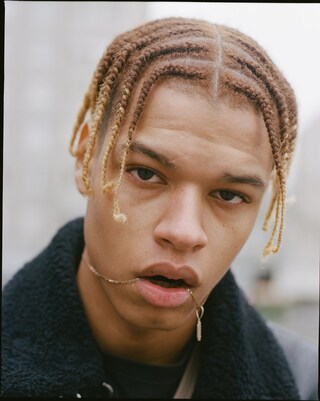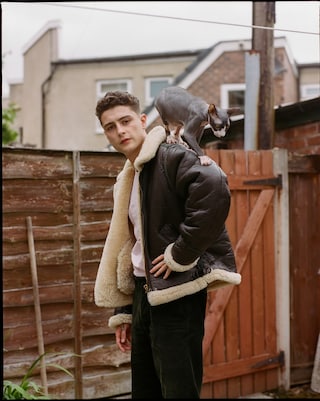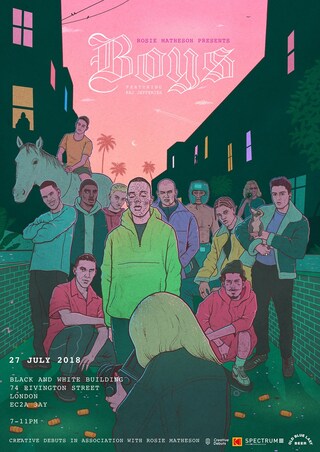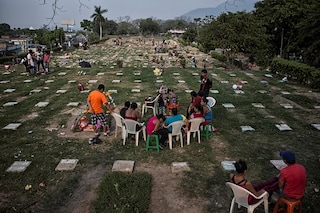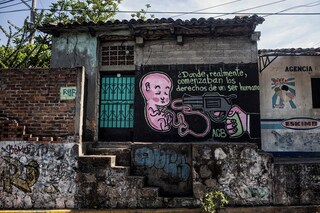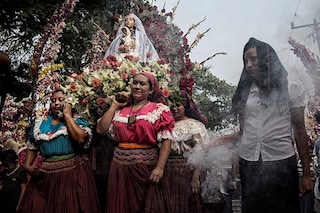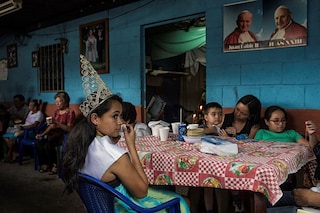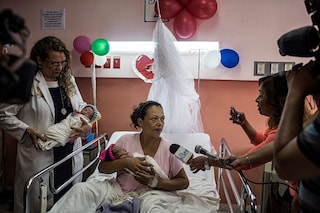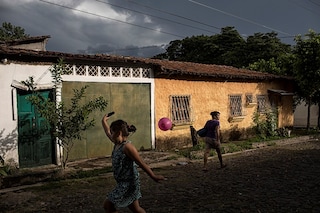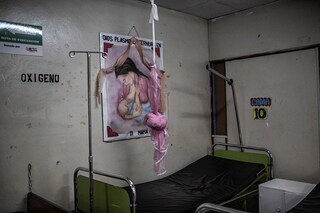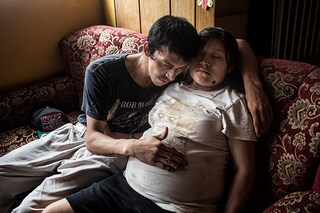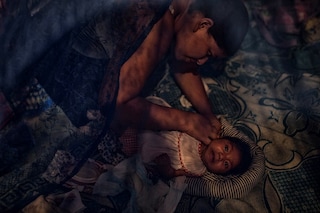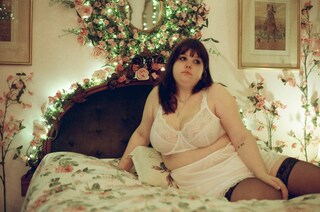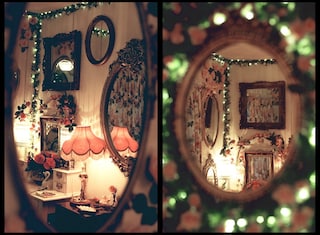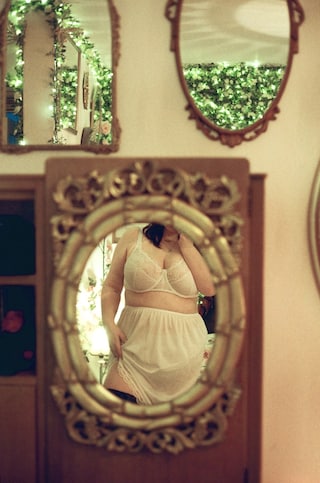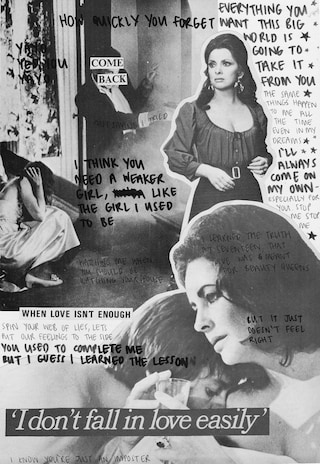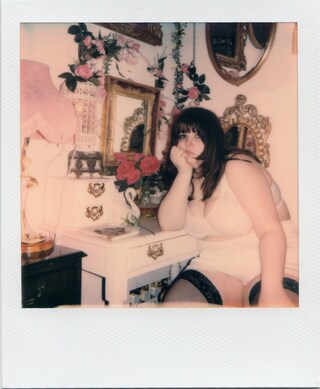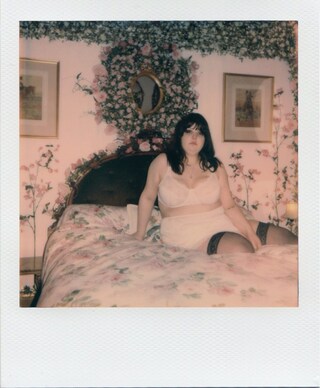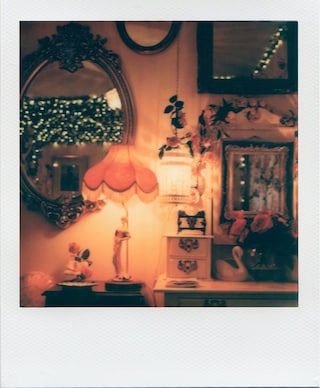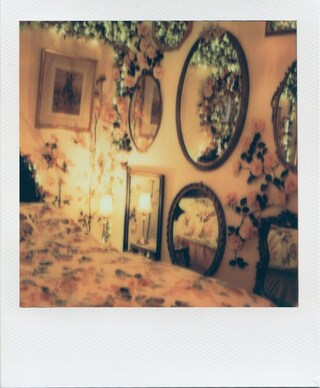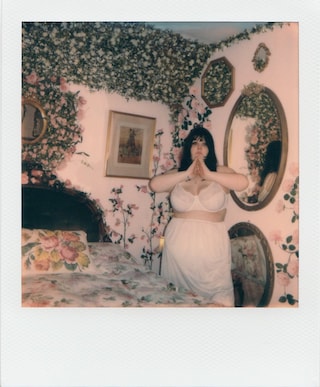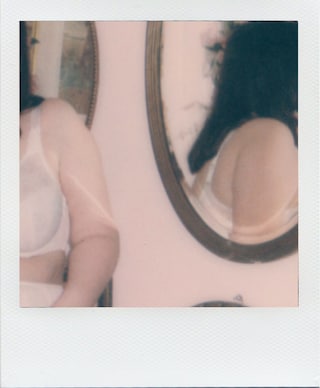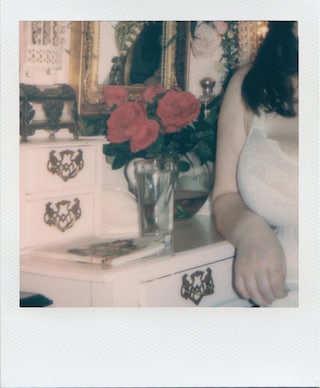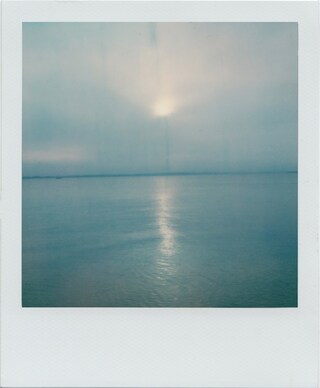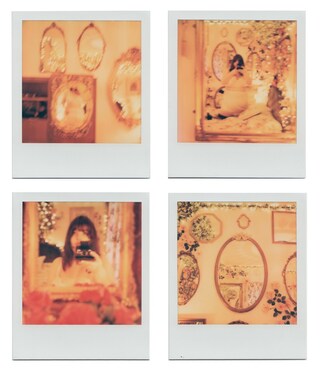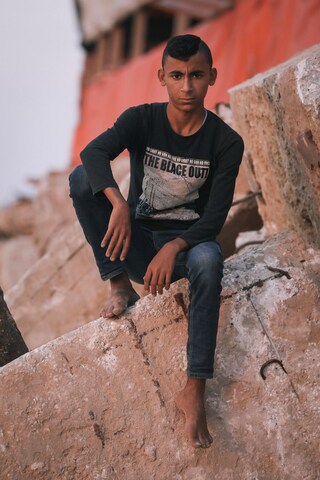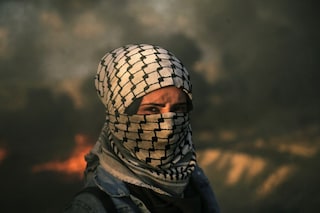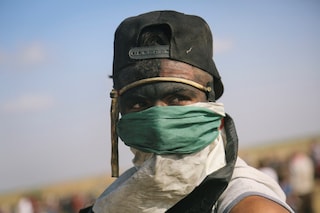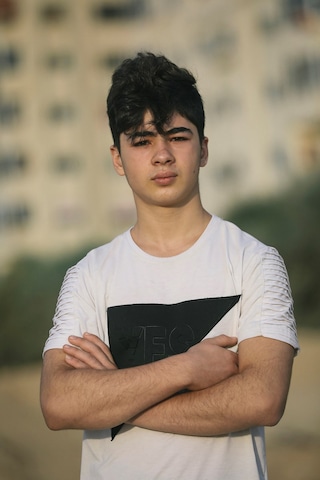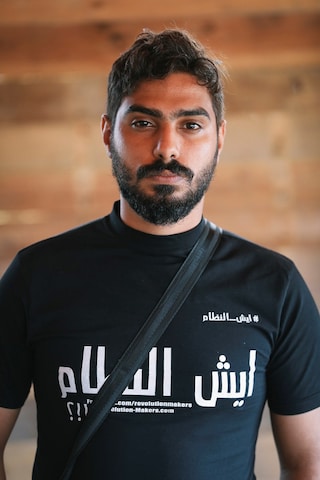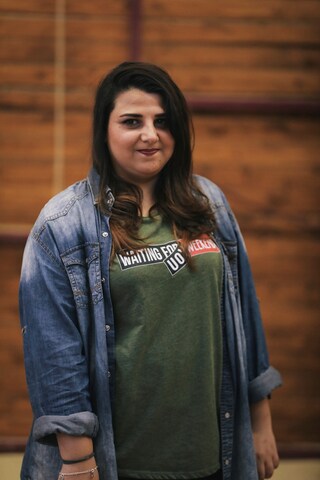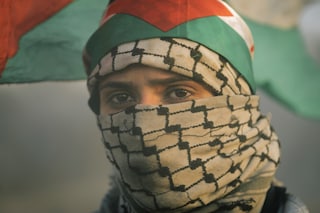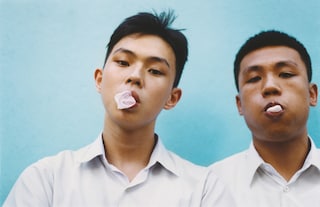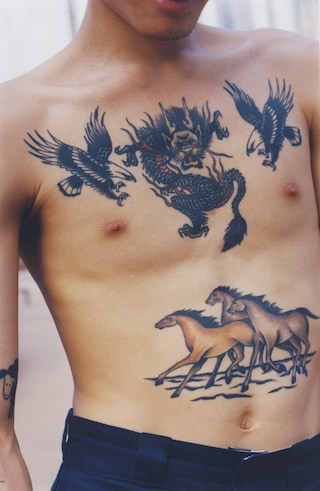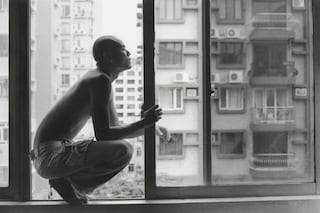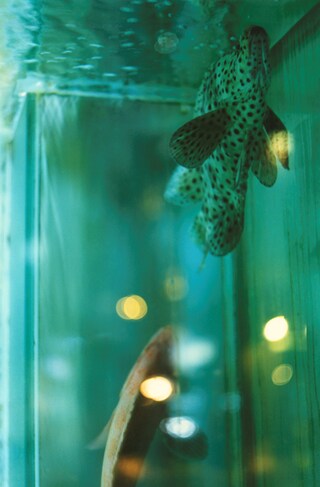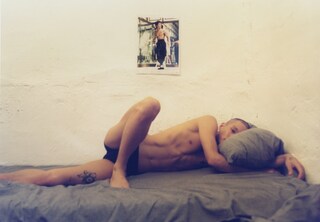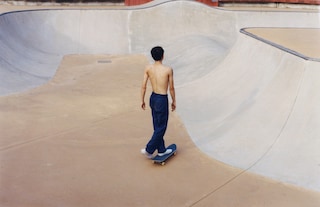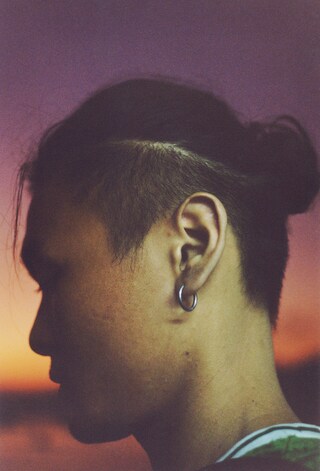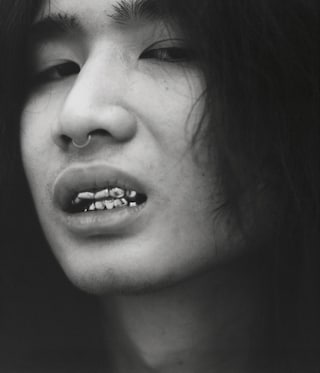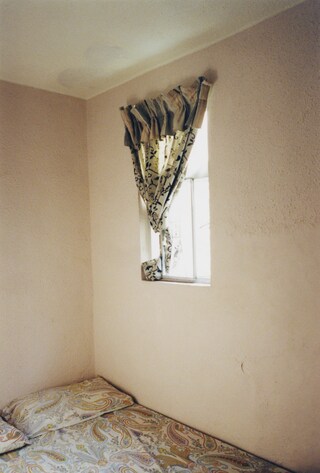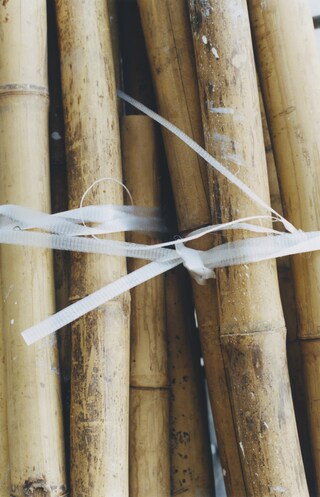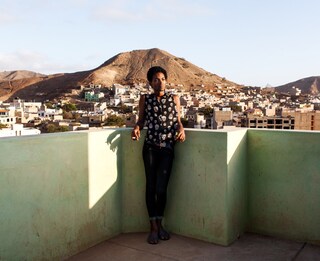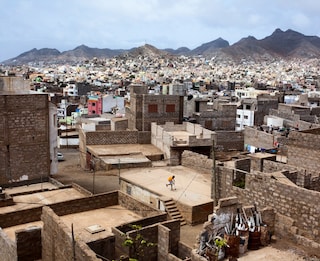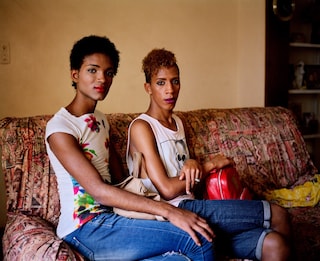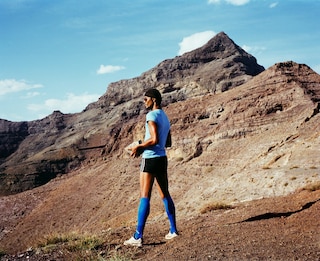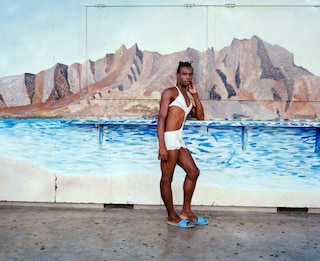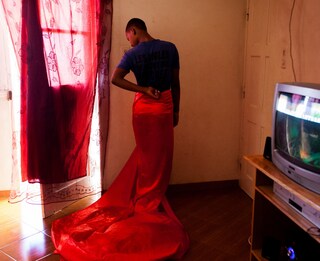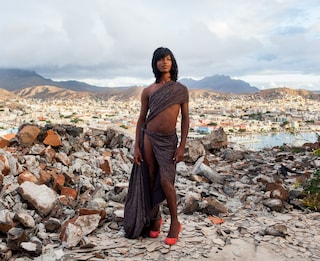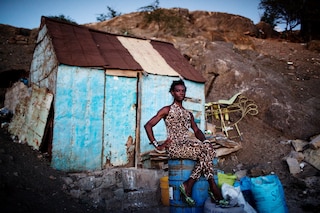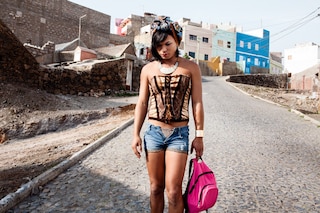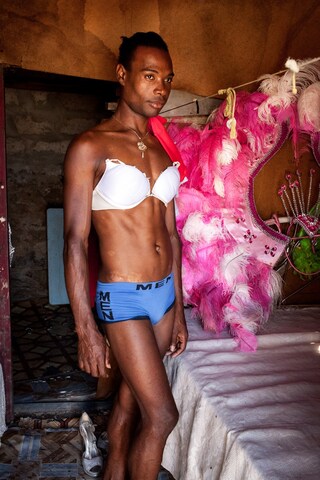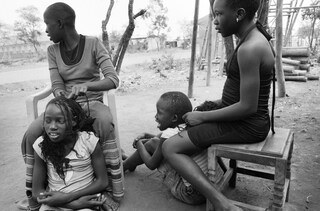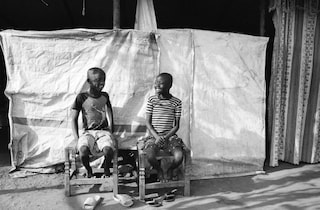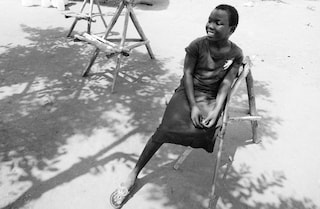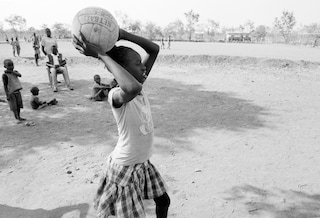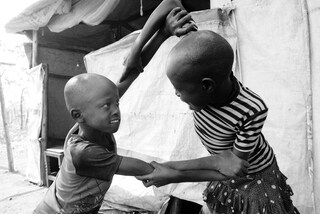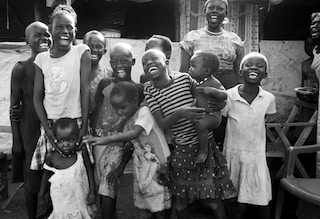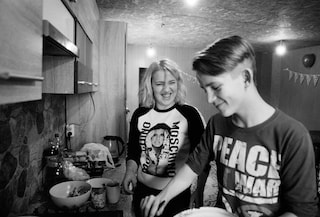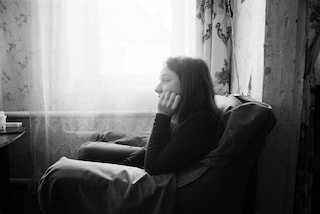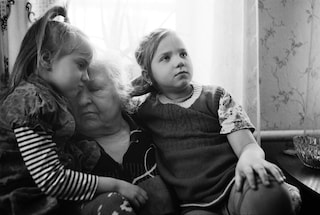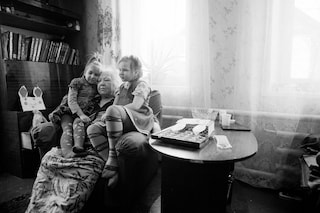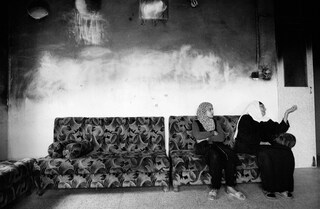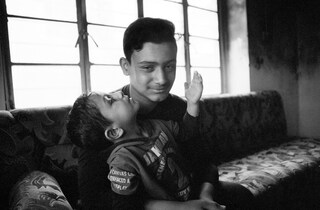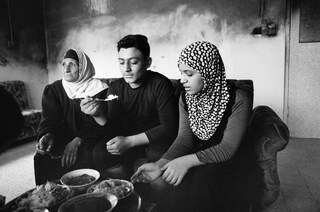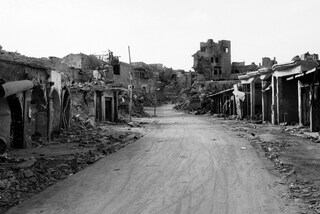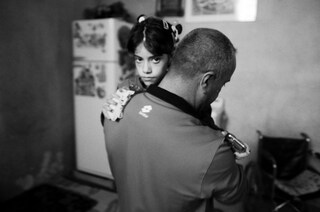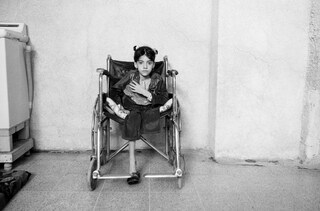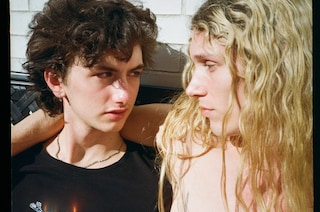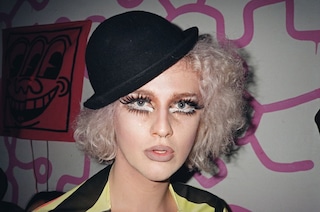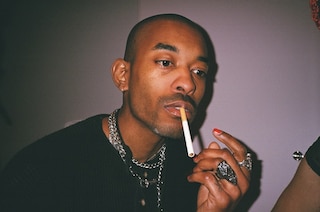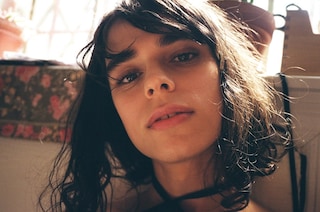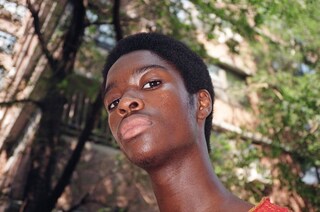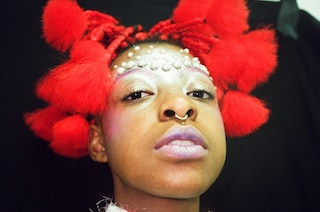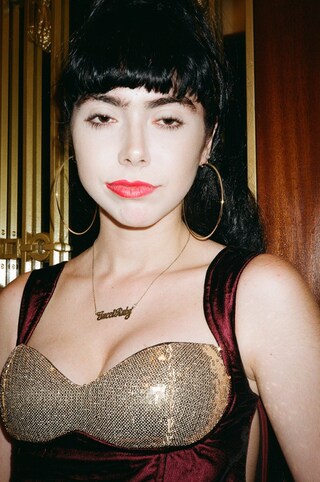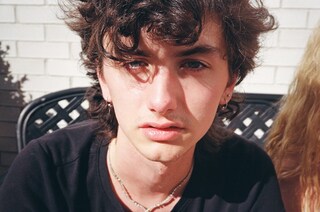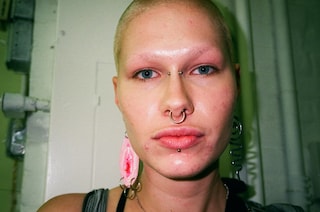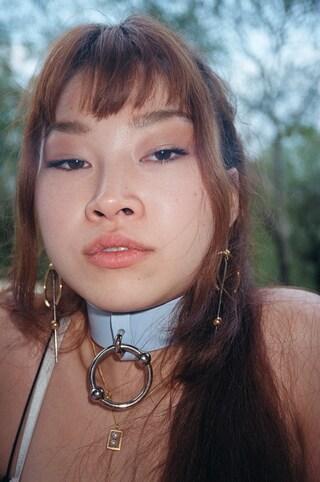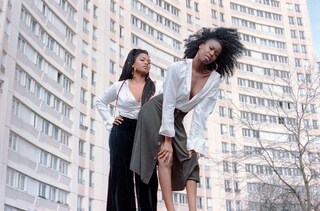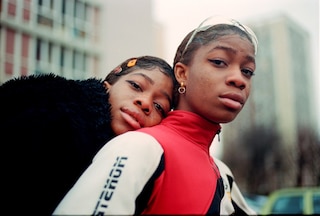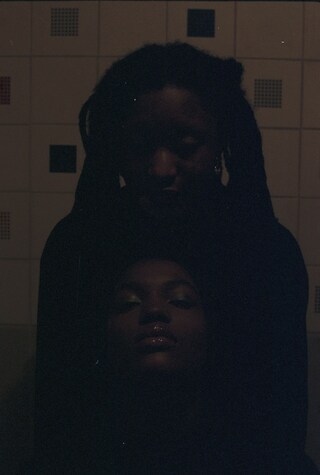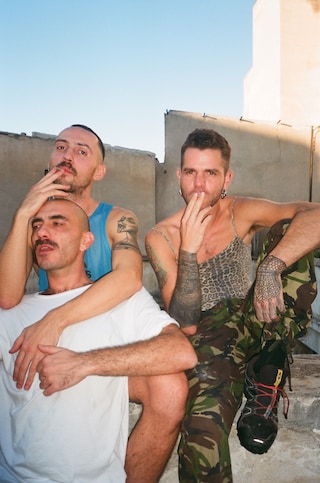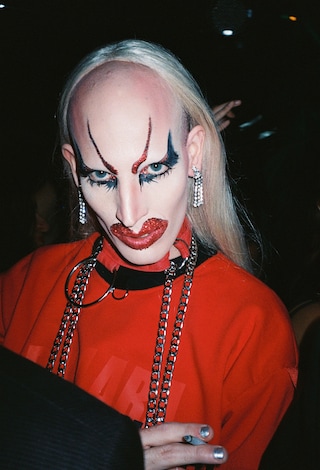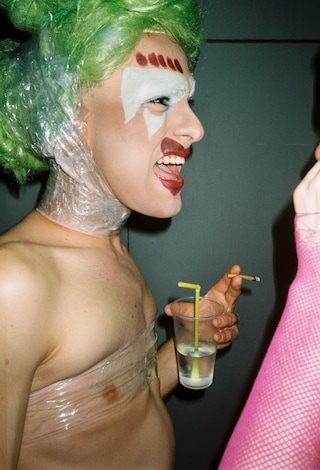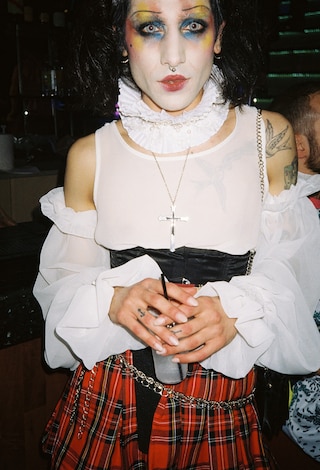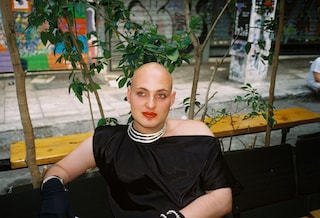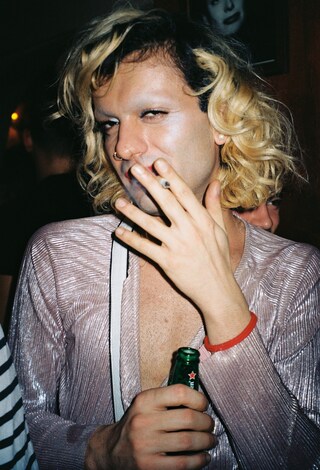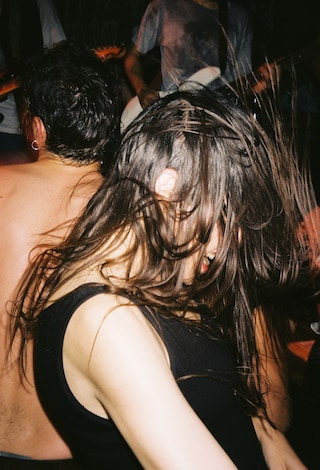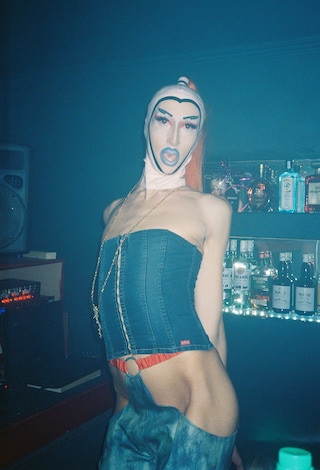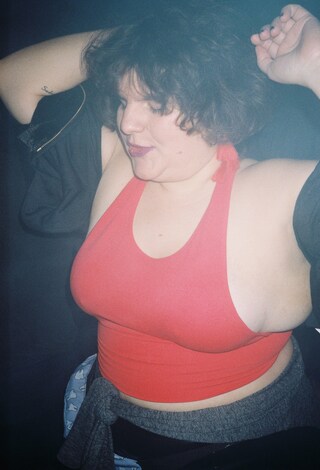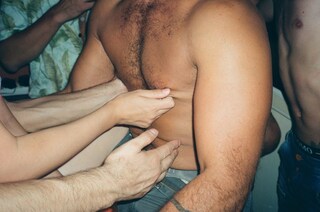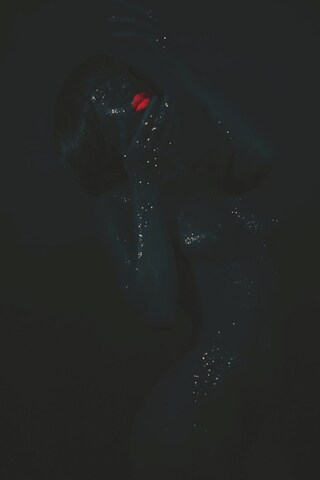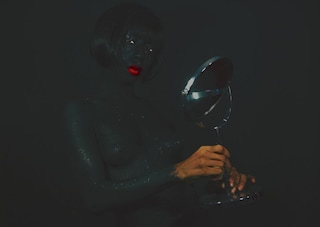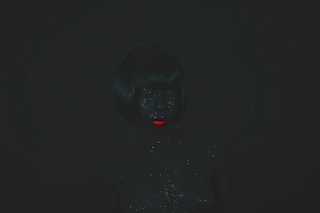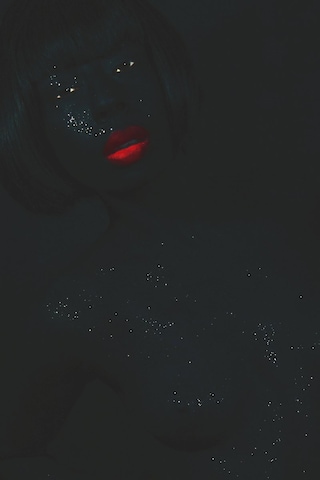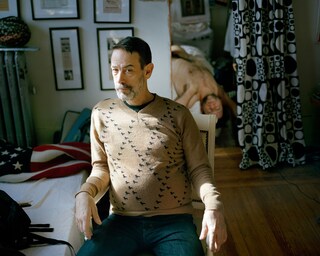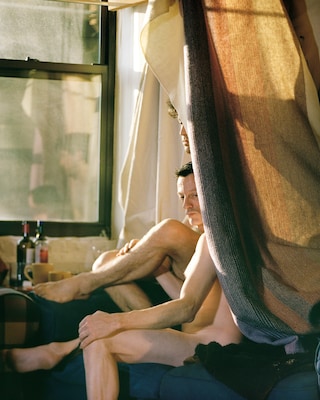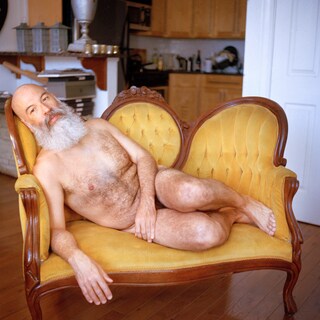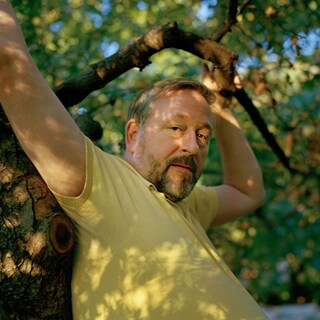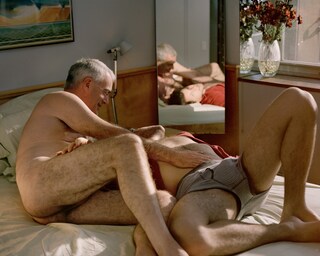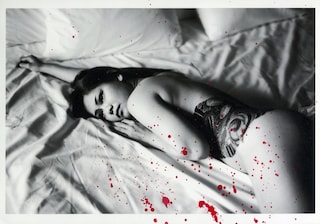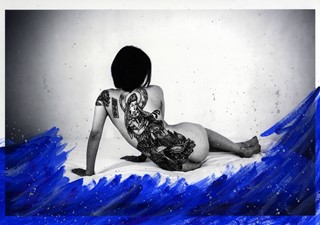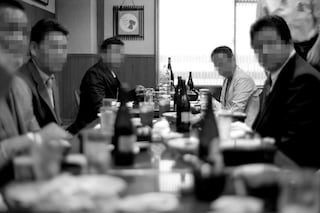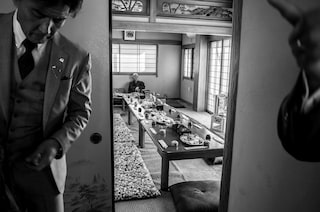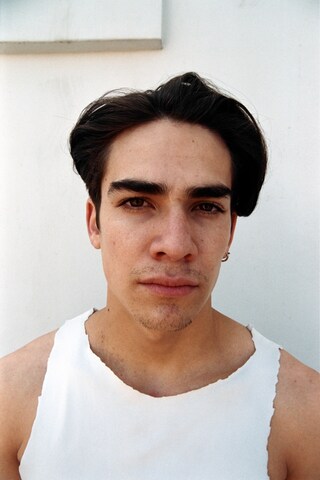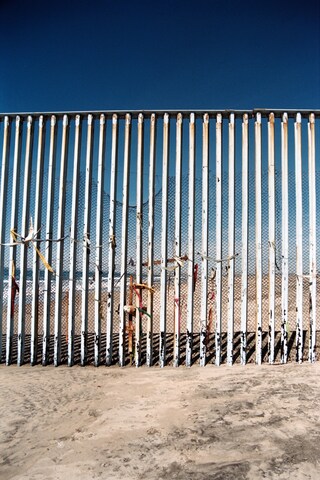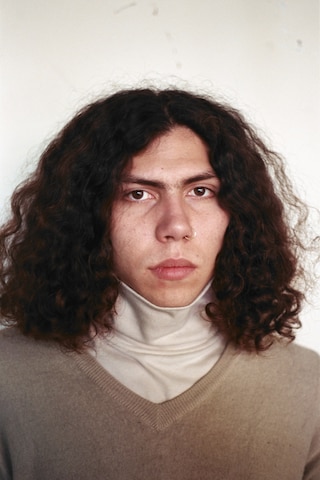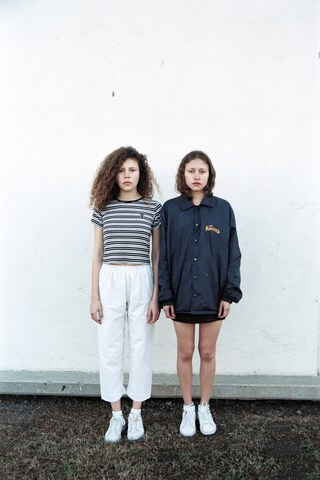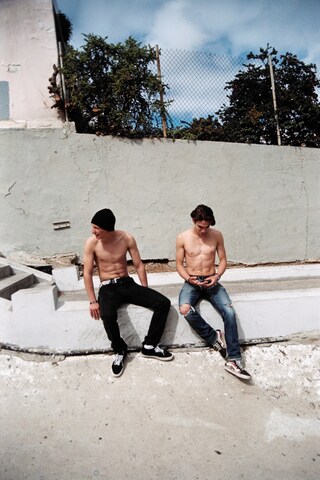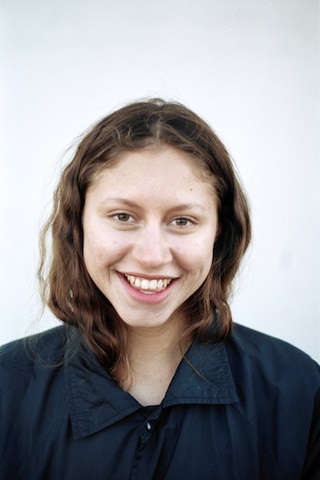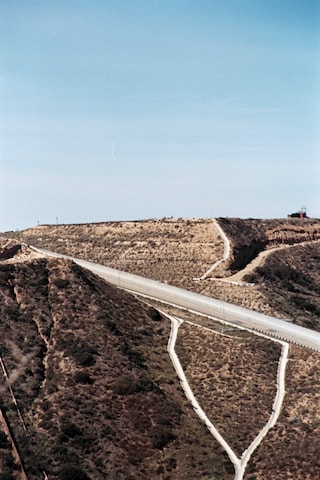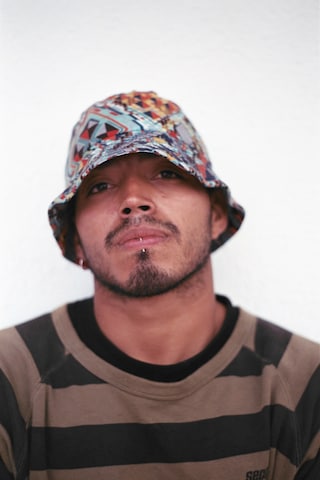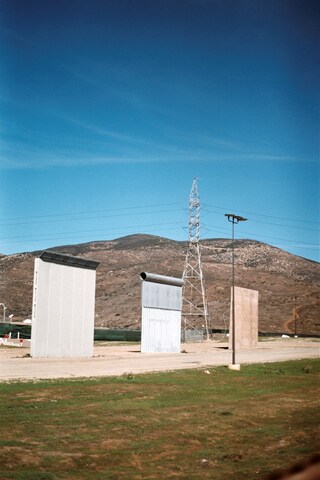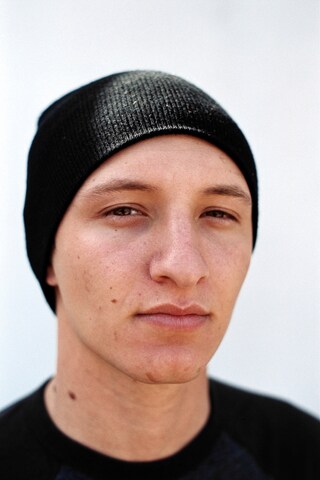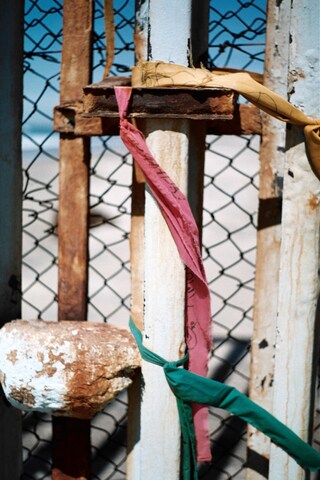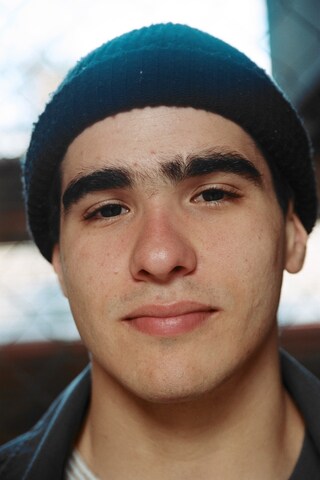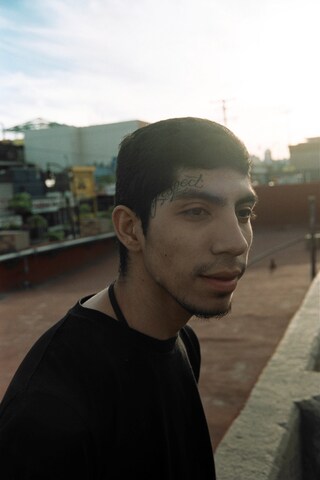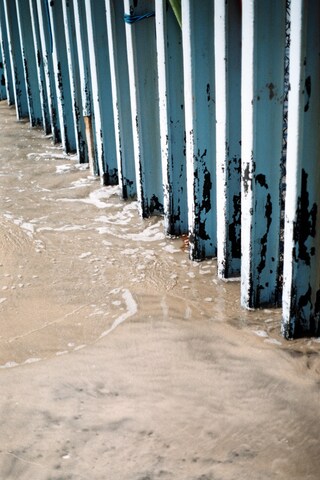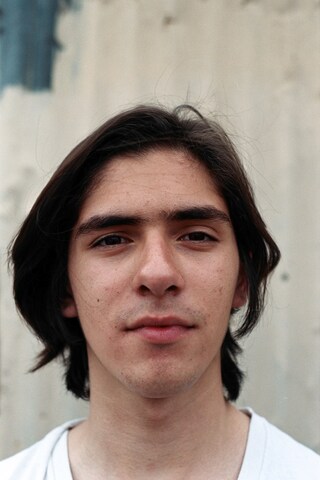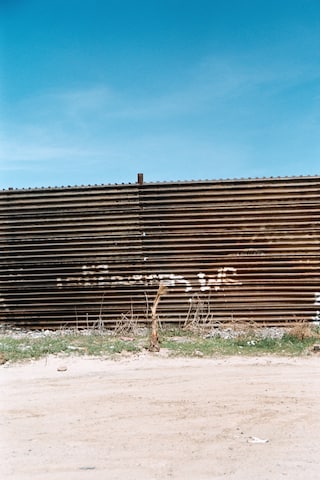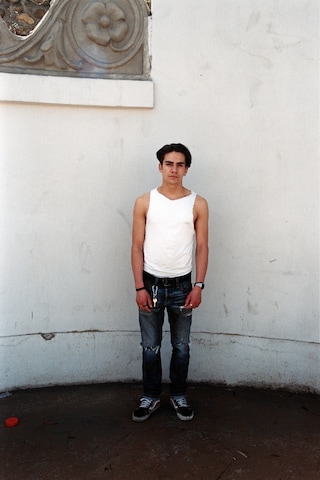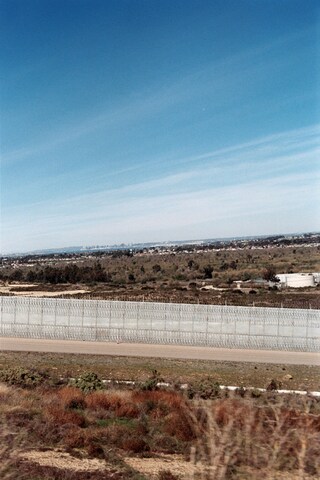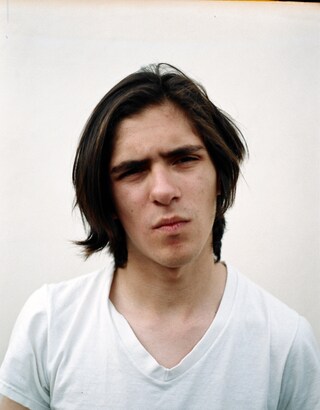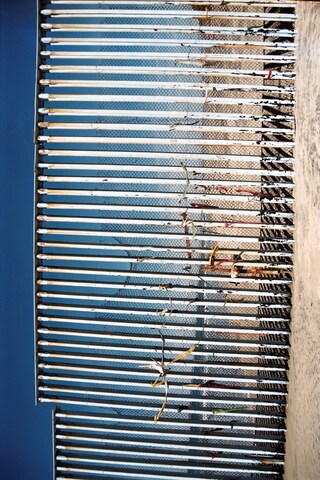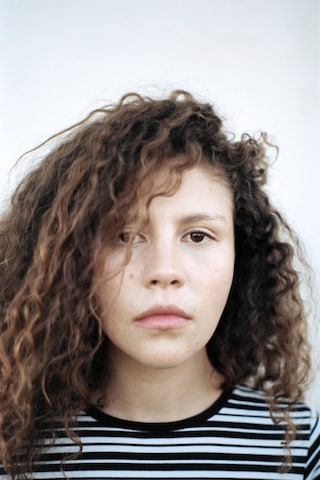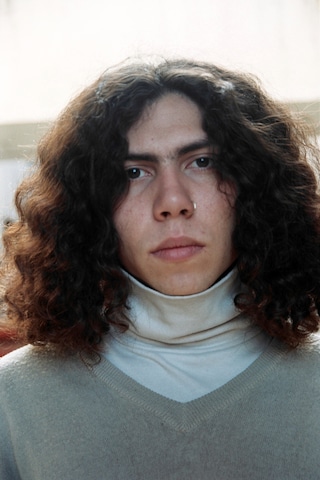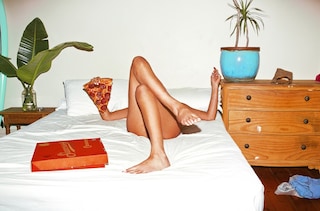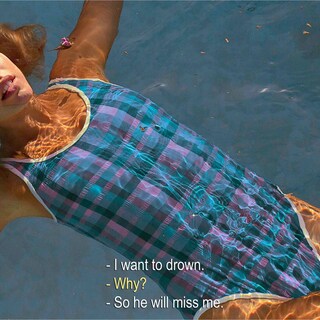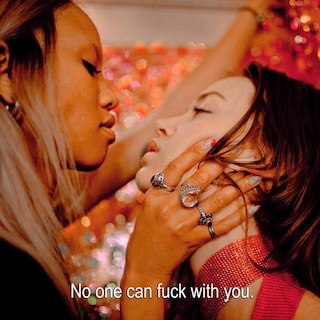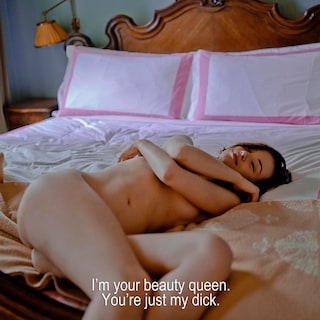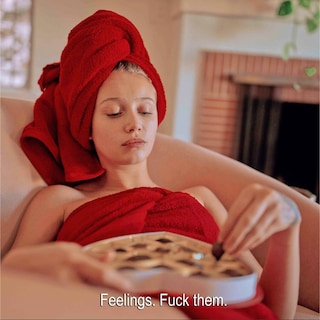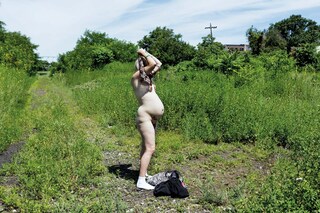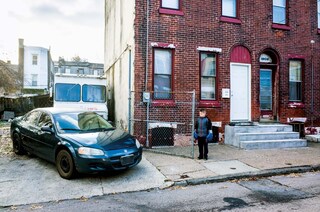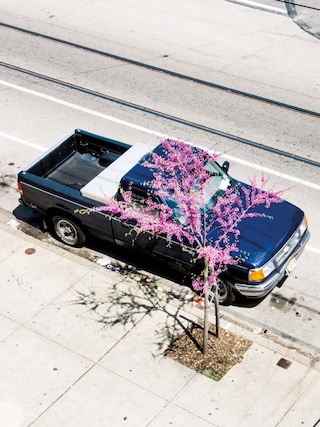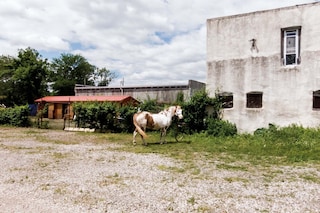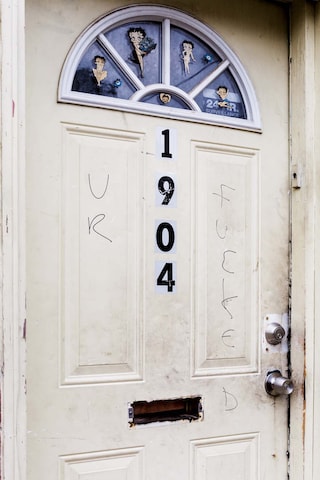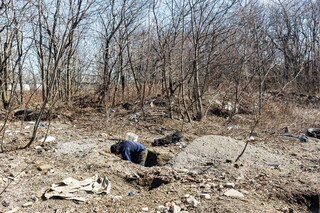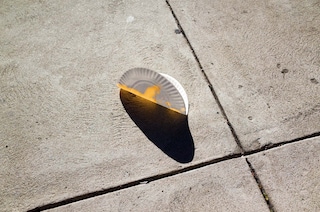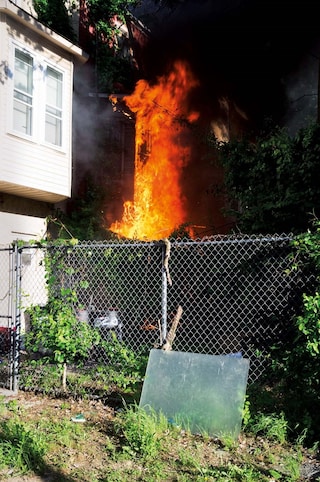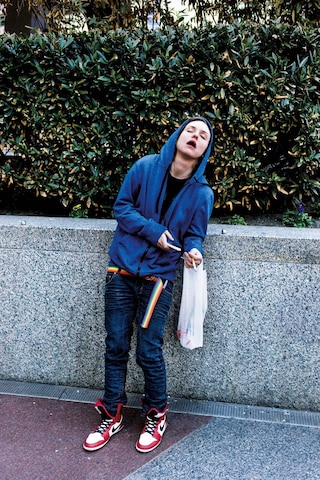In our uncertain social and political climate, this year photography was a powerful tool for exposure and change across the globe
In a turbulent world, photography holds up a mirror to ourselves, and a window into others’. As the uncertainty swirls, the camera can help us make sense of it all. 2018 was no exception, and photographers from all over the world used their lens to cover social, political, and economic issues from their communities and the places they have been welcomed into: whether this was the fights for abortion rights in El Salvador, or for trans rights in Peru. Some of our favourite photos this year showed the complexity of femininity in China, and the reality of life for Palestinian youth living on the Gaza Strip.
Due to the sensitive nature of many of these images, we didn’t feel it was right to rank them. Instead, each stand equal with one another as some of the most important, powerful photos we’ve seen the year.
LUO YANG, FROM THE SERIES GIRLS
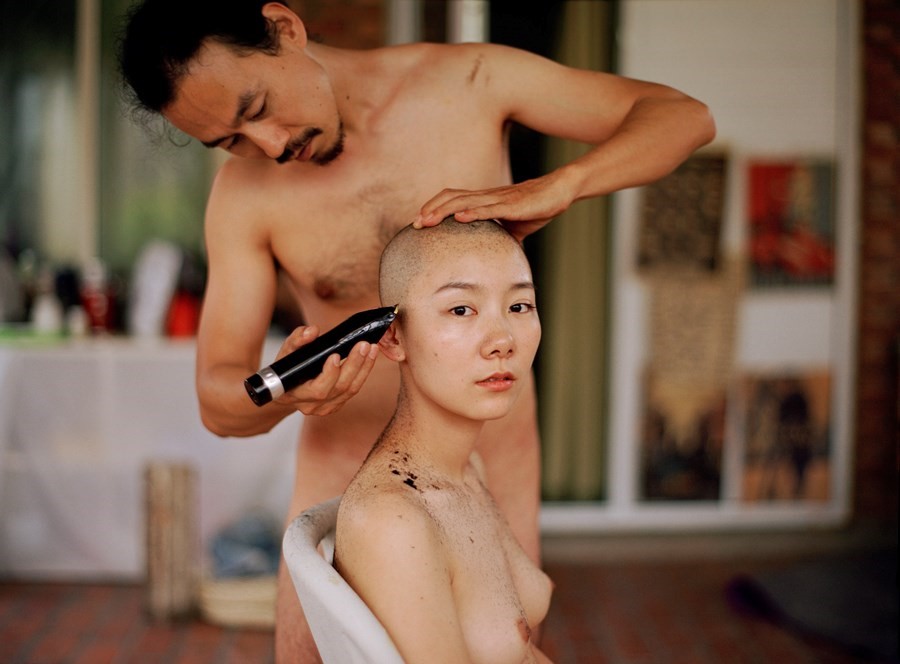
The camera can often be a tool to fight loneliness and unease. At least that was the case when photographer Luo Yang began GIRLS, a project that explores what it means to be a young woman in contemporary China. She started to photograph those around her – friends, acquaintances, and sometimes strangers that she had met online – and found they shared certain emotions and concerns. Though she aspired to make sense of a collective experience, Luo is well aware of the limitations of her project. “The kind of girls I shoot are a relative minority in China,” she told Dazed earlier this year. “They are the independent, free-spirited women that challenge traditional ideas around femininity. They might be slightly different from the mainstream typical Chinese girls, but they are also real.” Portraits such as these, of a friend shaving her head, bear witness to the manifold and unique individual expression of femininity across China’s diverse regional, social, and cultural landscape. (Clara Hernanz)
JUAN JOSE BARBOZA-GUBO AND ANDREW MROCZEK’S “MARCIELO”, FROM THE SERIES VIRGENES DE LA PUERTA
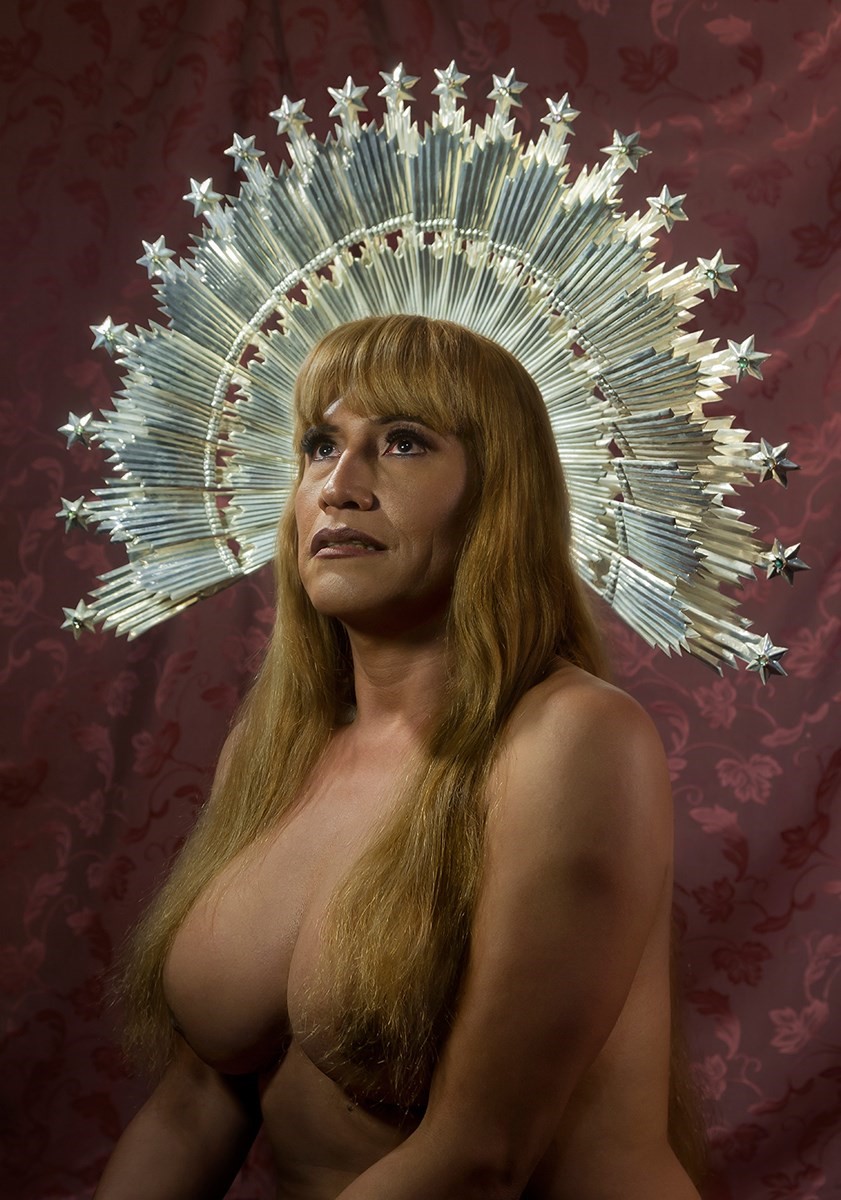
In Peru, religion is so intrinsic to cultural identity that it sways political action – however, for Peruvian trans women, this means oppression. This is why photographers Juan Jose Barboza-Gubo and Andrew Mroczek’s Virgenes de La Puerta, a photo series that turns Peruvian trans women into religious icons, is one of the most powerful series of the year. In this specific image, Barboza-Gubo and Mroczek give a platform to Marcielo, a local trans community leader, to reclaim her identity. In the image, she reclaims the visual markers often used against her Peruvian society (femininity and nudity), and celebrates them with strength, regality, and resilience, as signified in the silver crown. Through the way in which Marcielo is elevated in this image, she becomes immortalised as a religious icon – something so spiritual, it’s untouchable by Peruvian prejudice.
This series irritated a Peruvian congressman so much that after its release, he condemned it as ‘blasphemous’, and is now trying to impose a law where anyone who offends the church could face imprisonment. This photo needs to be seen now more than ever to increase the visibility of Peruvian trans women. (Lexi Manatakis)
NICK GRAVILOV’S “OBMAN”, FROM THE SERIES Клуб
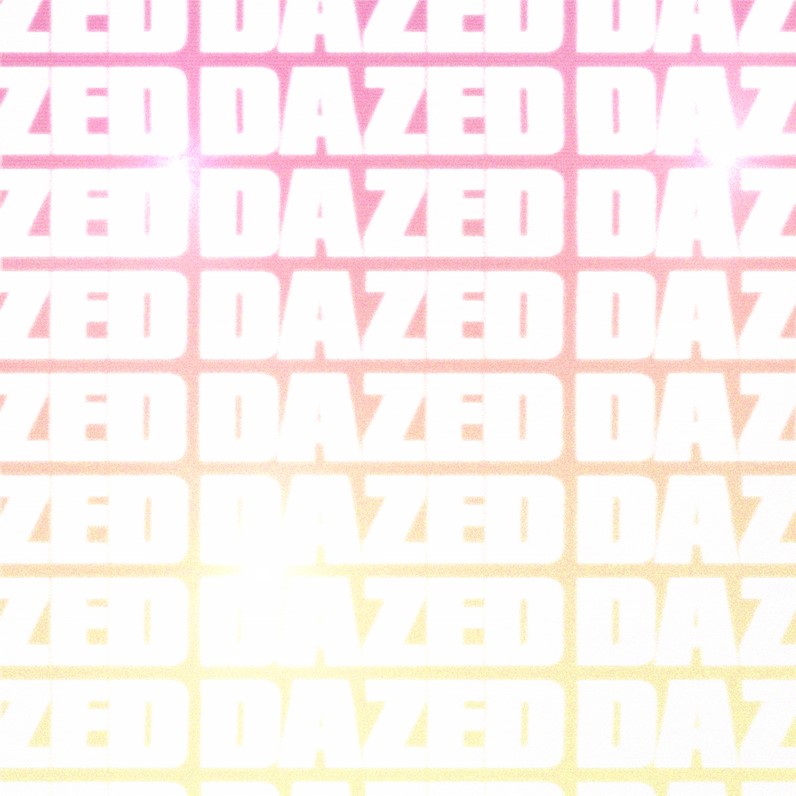
In the face of Russia’s totalitarian club closures, its rave scene is in turbulent times. In 2017, the country’s most prolific DIY club Rabitza was violently shut down by police. It exposed the widening chasm between Russian authorities, and a youth culture searching for freedom from the weight of their Soviet past. While Russia’s DIY club culture was momentarily dying in its capital, Moscow, 700km north east of the capital, in Saint Petersburg, it was blooming. A few months after the closure of Rabitza, a group of creatives launched its successor, Клуб (‘Klub’), dubbed by the city’s youth as ‘the wildest club in Russia’. This photo was taken in Kisloty, and it is emblematic of the way in which Russian youth culture is finding new ways to thrive, as well as being an outright criticism of authority. (Lexi Manatakis)
ROSIE MATHESON’S “LUCKY”, FROM THE SERIES BOYS
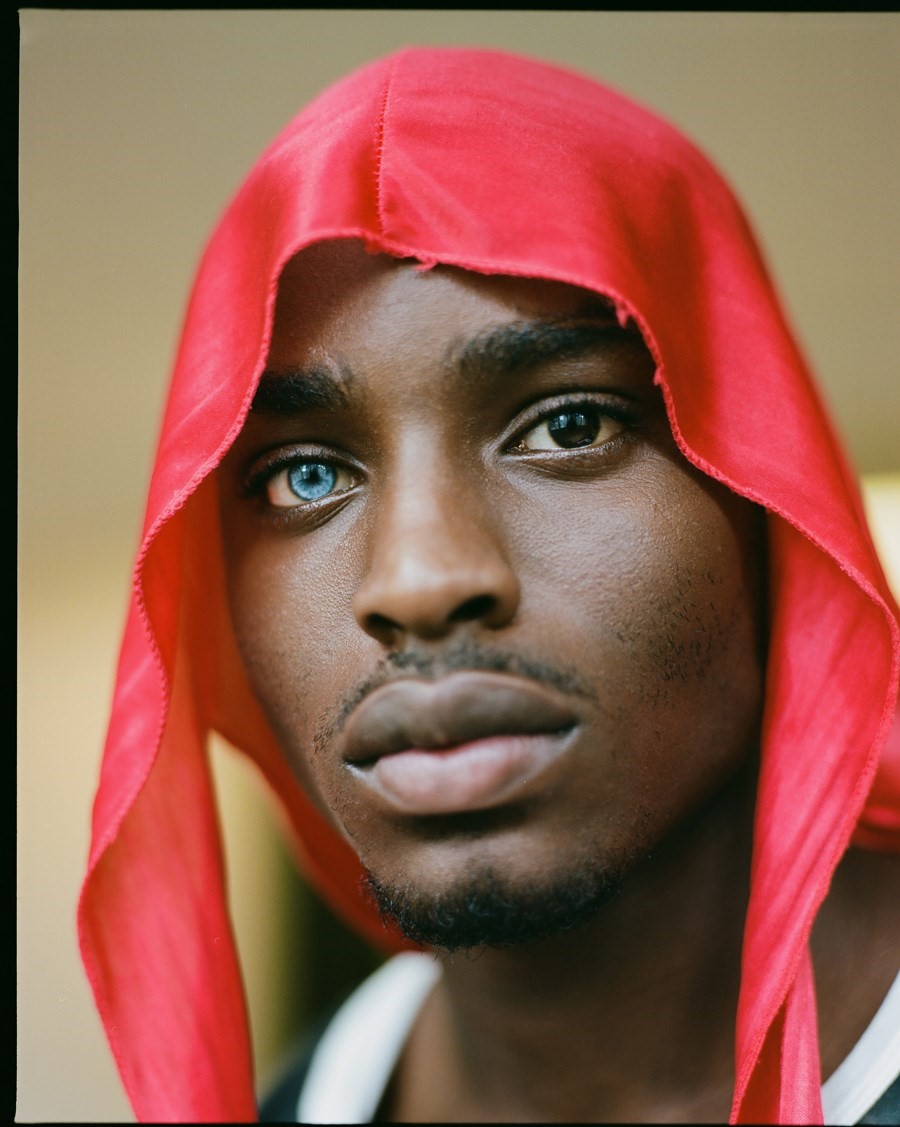
For three years, UK-based photographer Rosie Matheson has been sharpening her portraiture skills with a series now known as Boys. Originally, she had started shooting men because she felt most comfortable with them, but it has since evolved into march, a book, a film, and an exhibition. The images feel as authentic as Matheson’s reasons for shooting them, capturing men in moments of ease. This photograph in particular, of a young man named Lucky, stands at the front of a series that Matheson explained as representative of a “changing idea of masculinity that I’ve seen over the years”, adding that “there is a slow breakdown of ‘what it means to be a man’”. (Ashleigh Kane)
NADIA SHIRA COHEN, FROM THE SERIES EL SALVADOR
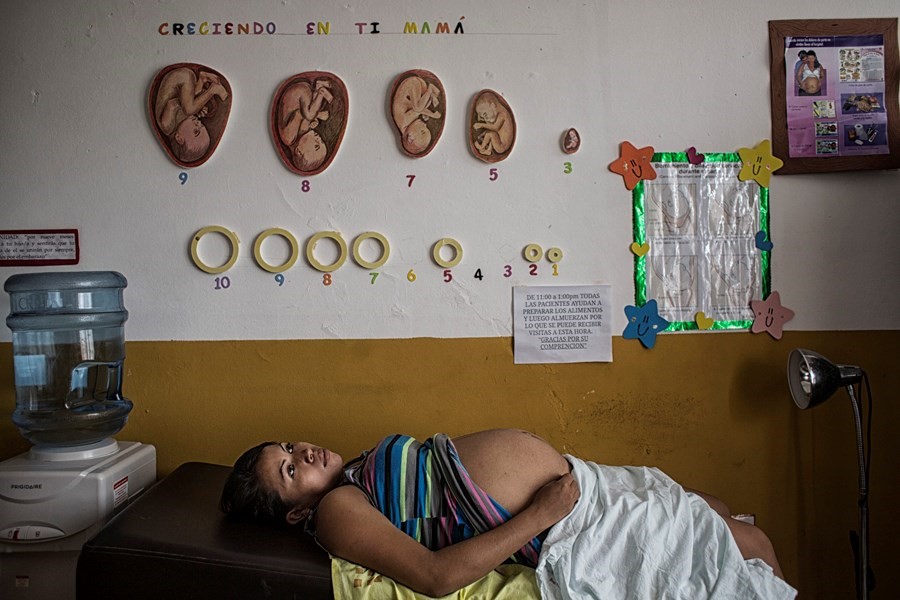
El Salvador is one of five countries to have an all-out ban on abortion that allows no exceptions: neither sexual violence, incest, nor life-threatening circumstances for the woman or the foetus. In fact, the law is so severe that it is used against women who have had obstetric emergencies – such as miscarriages or stillbirths – to accuse them of inducing their own abortions. Doctors and nurses are trained to spy on women’s uteruses, reporting any suspicious alterations and provoking criminal charges that can lead to years in prison.
In the image above, Abigail Sanches is waiting to be examined at a maternal waiting home which helps women who come from rural, poor areas. But in an environment where it’s not safe to seek healthcare, many resort to dangerous clandestine abortions and suicide. With Yo No Di A Luz, photographer Nadia Shira Cohen sheds light on the multi-layered social problems that derive from a lack of healthcare and reproductive rights. (Clara Hernanz)
CHLOE SHEPPARD, FROM THE SERIES A SELF-LOVE LETTER TO MYSELF, A FAT WOMAN
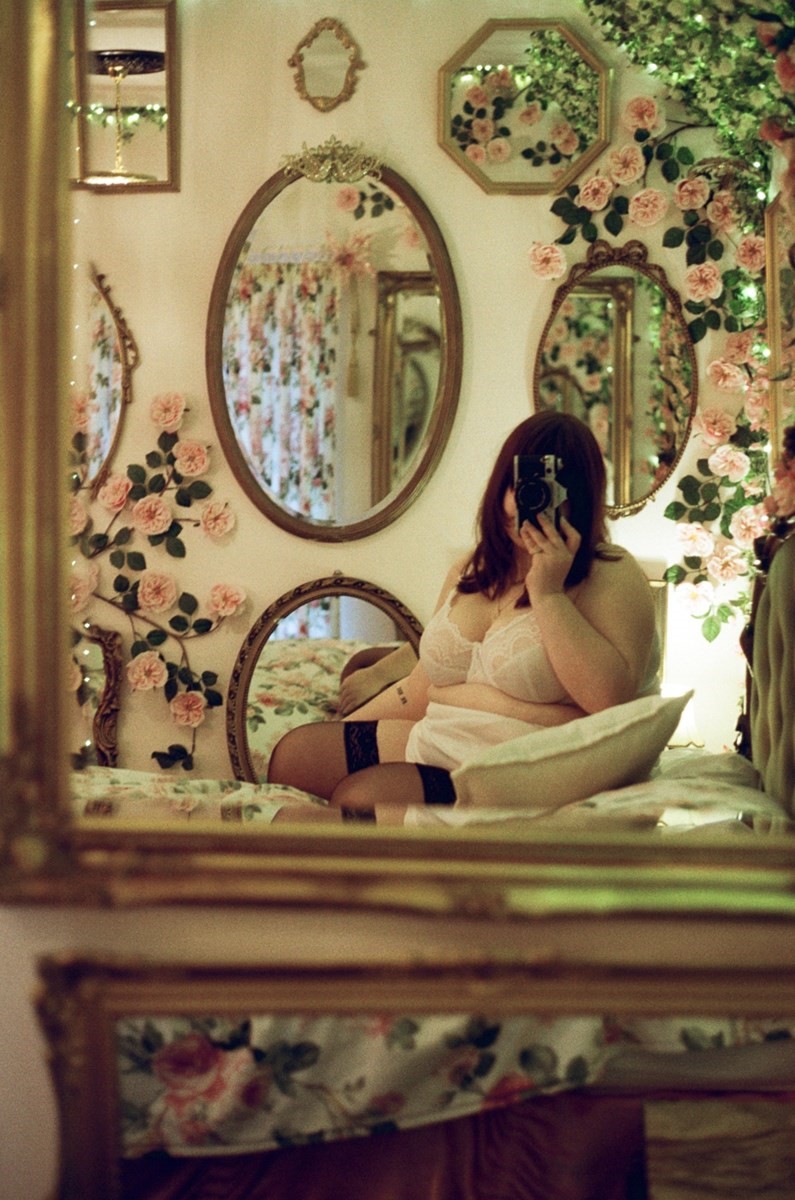
Practicing self-love can be tricky in the age of Instagram. Highly stylised and marketed wokeness might give the impression that all bodies count the same, but IRL, socially acceptable standards of beauty remain narrow and exclusive to those that don’t fit them. With this in mind, photographer Chloe Sheppard decided to use her photography to create space and representation for plus size girls and self-conscious teenagers everywhere. “I am trying to be the person I wish I had to look up to when I was younger,” she said. Despite Sheppard admitting she is not fully at peace with herself, delicate Polaroid portraits like this one reflect how far she has come, while acknowledging how far she has yet to go in her ongoing personal journey towards self-acceptance. (Clara Hernanz)
ACTIVESTILLS’ “RAGHDA”, FROM THE SERIES PORTRAITS OF PALESTINIAN YOUTH
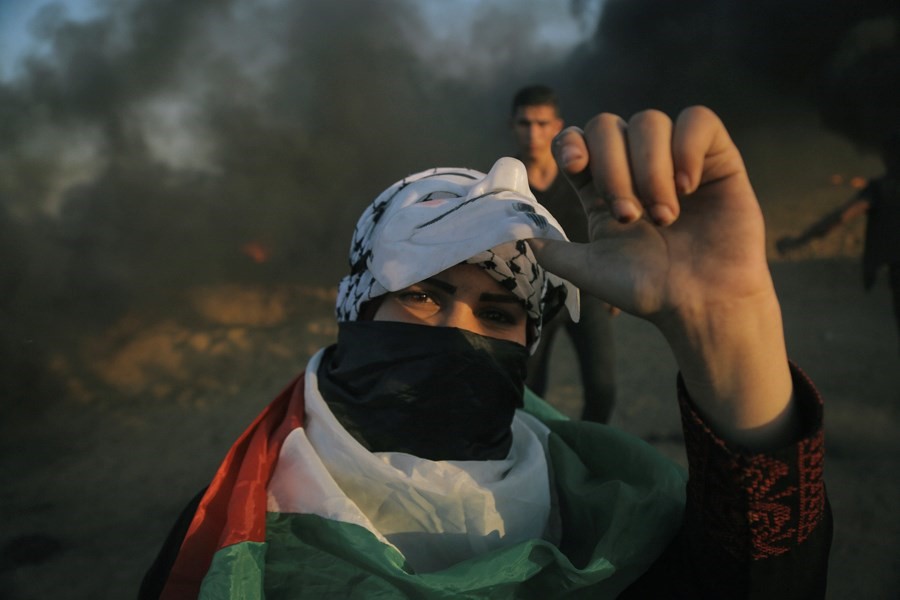
Through the lens of western media, Palestinian youth are suffocated by politics and violence. Activestills is a photojournalism collective working in Palestine to change this, by ensuring an authentic portrayal of young Palestinians. From underneath war, how is youth culture in Palestine surviving, let alone thriving? What are the future hopes and dreams of its young people? Leading these questions visually, in 2018, it’s critical that pursuits like Activestills exist in order to ensure we see an authentic representation of life in Gaza.
In this empowering portrait of Raghda (aged 17), we see the harrowing reality of life for a young Palestinian girl. The portrait is accompanied by an interview that shines a light on her dreams of being a peacemaker, and her fearlessness in confronting Israelis at the border. If what we understand about our world is achieved through what we read and see in the media, then for the future of Palestinians, this image needs to be centre stage. (Lexi Manatakis)
ALEXANDRA LEESE, FROM THE SERIES BOYS IN HONG KONG
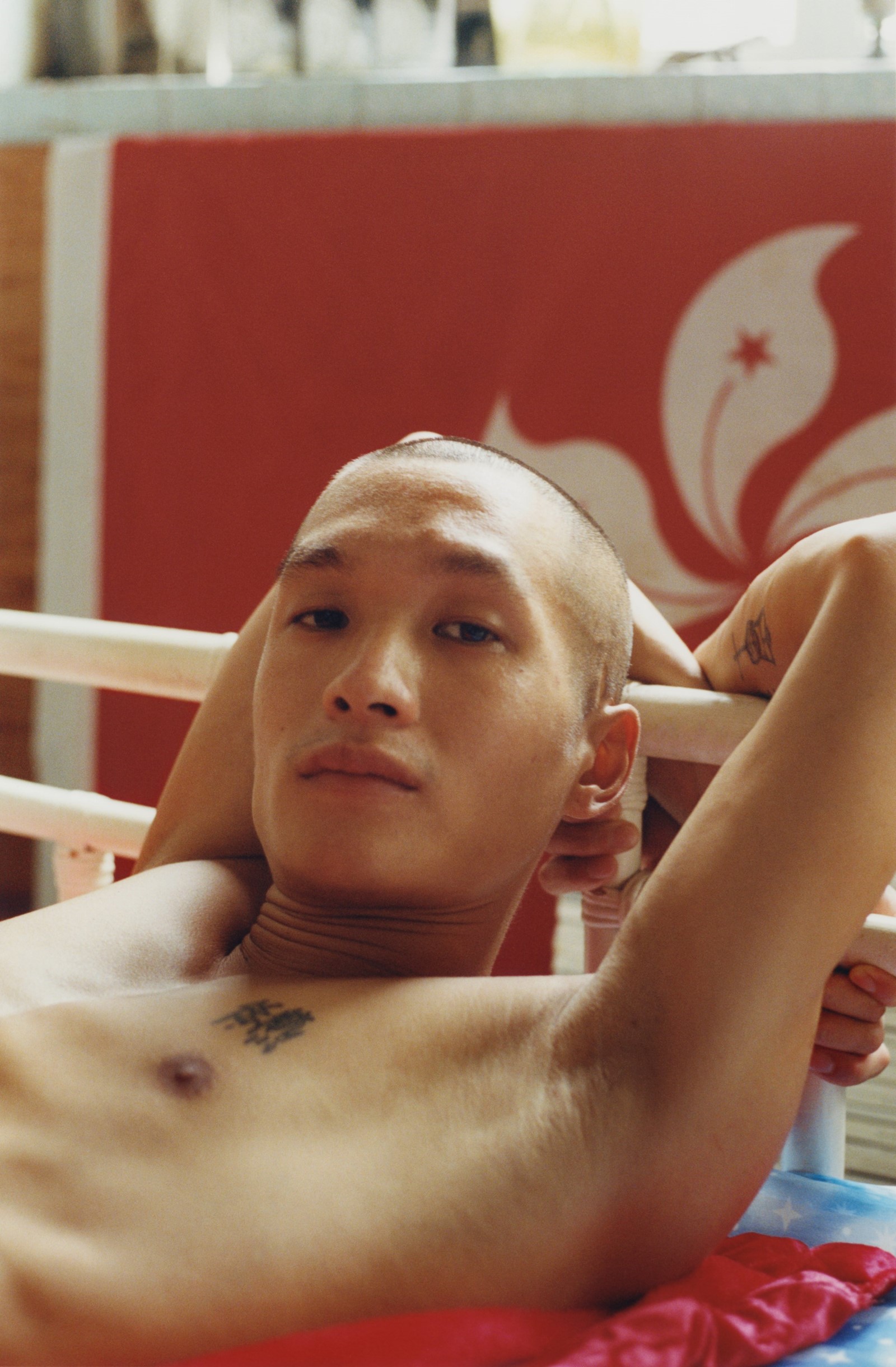
Released as an exhibition, a zine, and a film, Alexandra Leese’s striking images of the young men she met in Hong Kong dismantled stereotypes surrounding Asian men, and offered refreshing new perspectives on masculinity. At its core, it’s a celebration of beauty and diversity, with Leese explaining, “In western society, Asian men tend to be regarded as ‘less attractive’. There is also a tendency to stereotype Chinese boys as ‘all looking the same.’ I aim to show diversity within Asian masculinity and celebrate their beauty.” This image of a man reclining on his bed, shows a vulnerability that the mainstream, west gaze doesn’t often allow us to associate with China. (Ashleigh Kane)
PAULIANA VALENTE PIMENTEL, FROM THE SERIES QUEL PEDRA
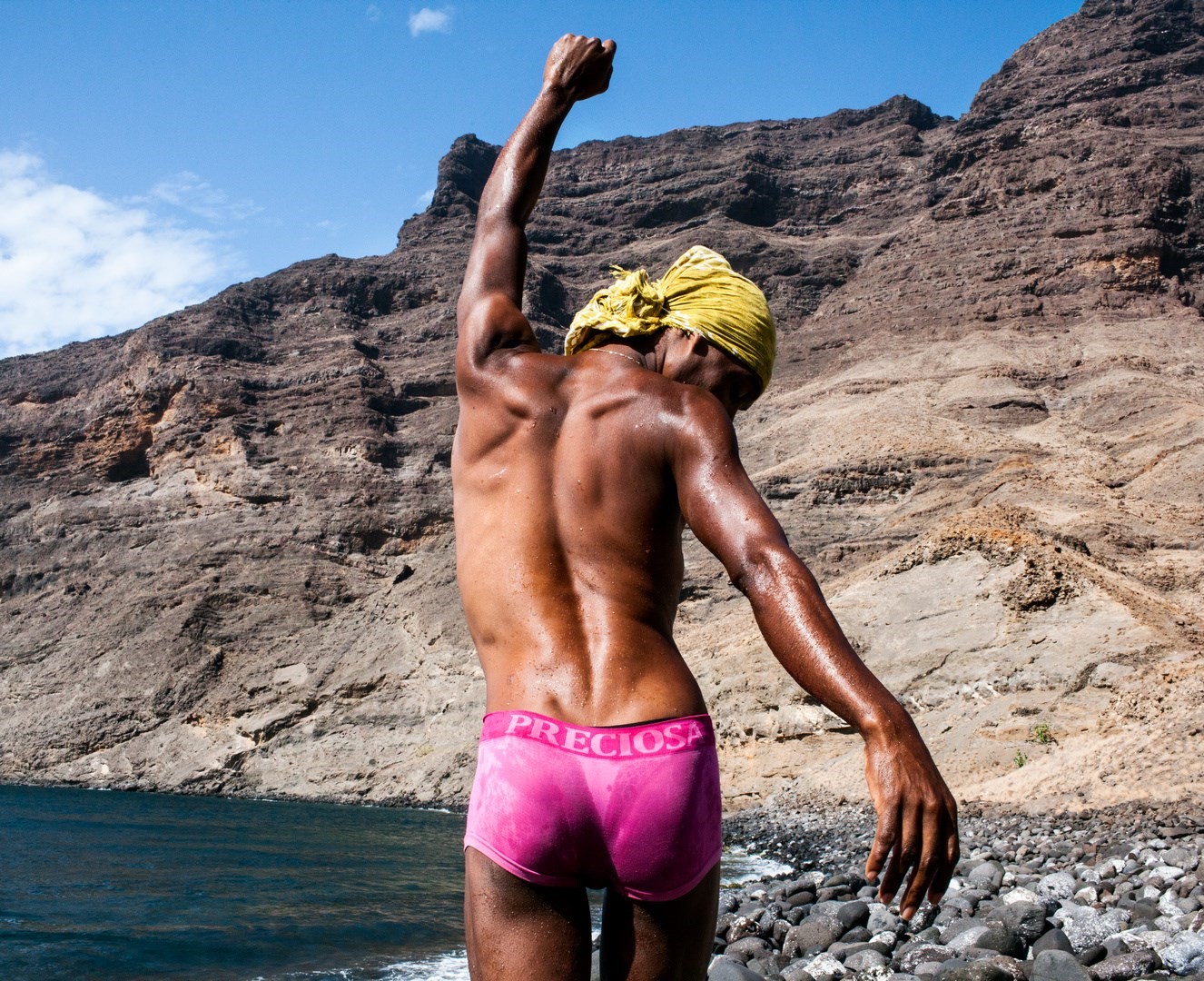
Photographer Pauliana Valente Pimentel’s work provides a twist on the standard narrative of west Africa’s tolerance towards the LGBTQ+ community. Quel Pedra, which was nominated for Portugal’s most important photography prize, the Novo Banco, documents the lives of gay men and trans women on the island of São Vicente, in the archipelagos of Cape Verde.
Beyond a sensible portrayal of their living conditions, the images are a trans-affirming depiction of freedom and self-love. The series succeeds in portraying a safe network that is so necessary to the survival of the community. In this still, a woman wearing pink boxer briefs that read “PRECIOUS” on the waistband, shakes her arms in a pose that exudes the strength and liberty that are so characteristic of the entire series. (Clara Hernanz)
GILES DULEY, FROM THE SERIES THE FACE OF WAR
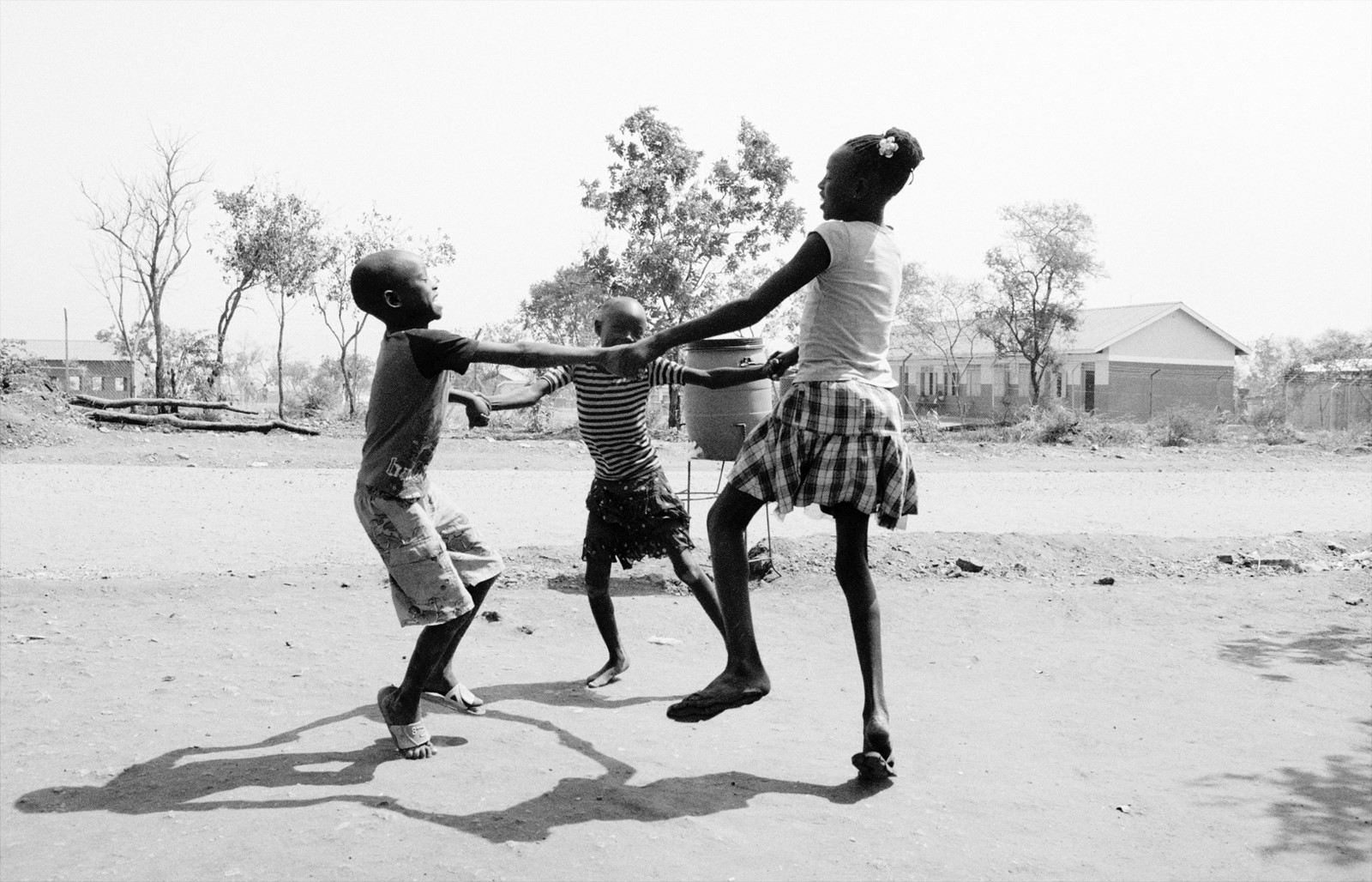
Even in the darkest of circumstances, humanity and joy can pierce through. The best photographers remind us of this – earlier this year, that’s exactly what renowned war photographer Giles Duley did with his new series Faces of War, published on Dazed in collaboration with Save the Children. Each photo in the series shows the children who are bravely, unjustly living through terror in Ukraine, Iraq, and in the Ogumo refugee camp in Uganda. The latter, where this photo was taken, is a reminder that children are still children, even when faced with unspeakable hardship.
As Duley wrote in Dazed, “Life is tough in the camp, with the baking heat, the dry, dust-filled air, and the lack of food – and hope of returning home fades by the day. For Josephine, the opportunities for furthering her education are limited. When I ask her how she copes, she just shrugs her shoulders. When I ask her how it is being a girl in the camp, she replies, ‘It’s fine being a girl. We are stronger.’” (Aimee Cliff)
MARIE TOMANOVA, FROM THE SERIES YOUNG AMERICAN
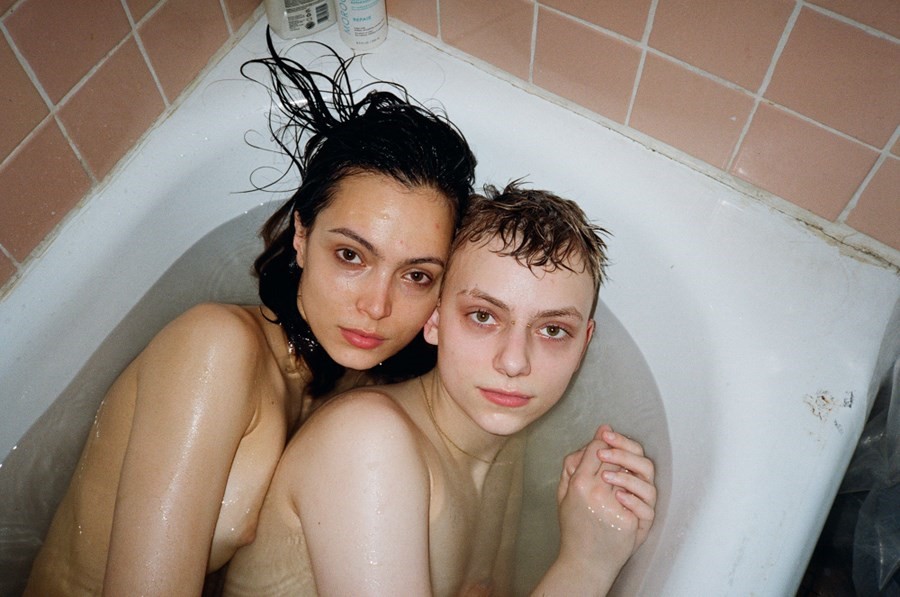
If we want to gage what the future of America could be, we might turn to Young American: a photo series spotlighting American youth by Czech-born, New-York based American photographer Marie Tomanova. The series mirrors the unapologetic power of youth culture found in movements such as America’s student gun control activists, as well as Black Lives Matter. It also acts as a reminder of what is at loss in the face of Donald Trump as the leader of the free world.
The empowering energy of Tomanova’s work reminds us how crucial positive visual representation is during dark times. “To focus on the positive aspects of hopes and dreams is to empower a motivation and agency for continued work for change rather than to retreat into helplessness and inaction,” Thomas Beachdel, who curated the Young American show earlier this year, explained to Dazed. “Tomanova’s work really has nothing to do with patriotism or saving some sort of idea of ‘America’ that has been steadily becoming more tarnished on the world stage. Rather, this body of work is a statement of what America really could be. What America should be.” (Lexi Manatakis)
RHEA DILLON, FROM THE SERIES SISTAHS
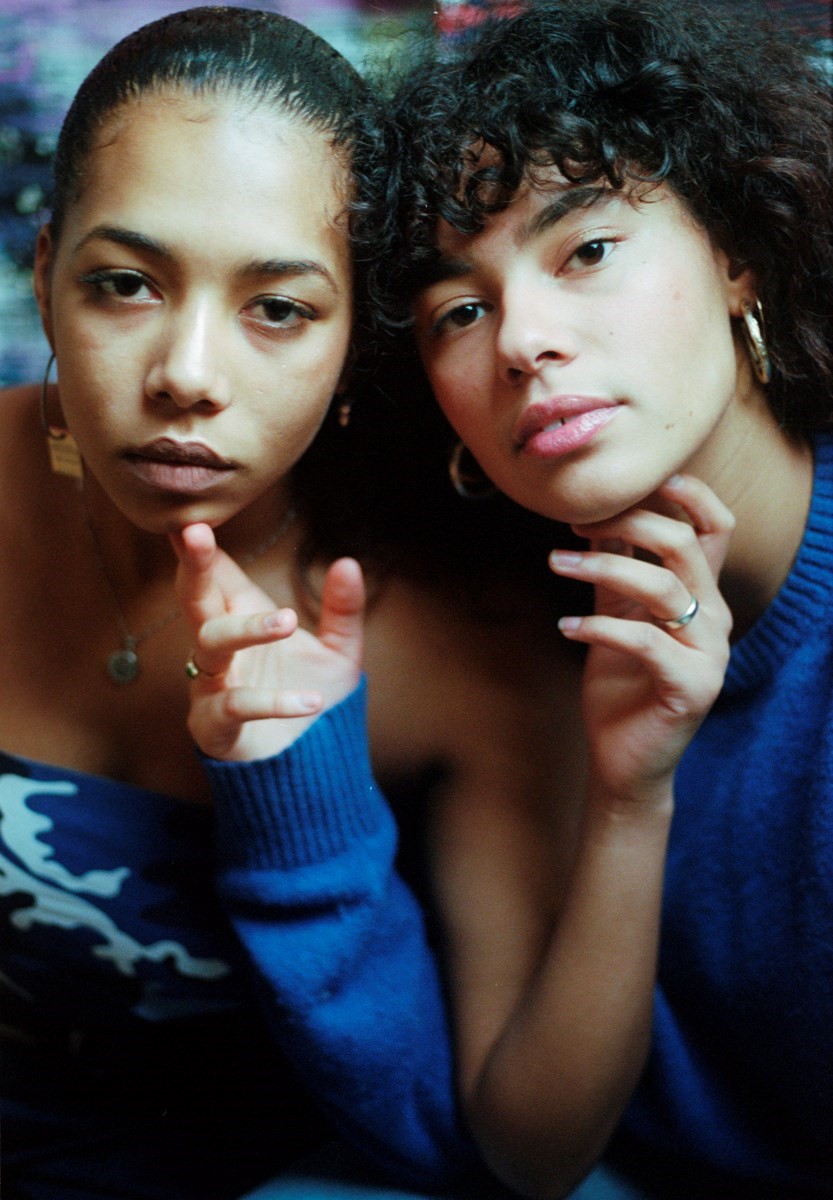
Rhea Dillon’s evocative photo series SISTAHS honours black female friendships in a climate that so often aims to pit them against one another. Dillon told Dazed, “Black girls have a stigma of being rude and argumentative, so I wanted to strip all of these ideas away completely.” It’s images such as the above, of two women gently embracing one another, eyes level and equally represented, that are the antithesis of girl-on-girl hate. In a year where it was clear that white men still hold the power, it feels more necessary than ever before to uplift the women around us. (Ashleigh Kane)
SPYROS RENNT, FROM THE SERIES ANOTHER EXCESS
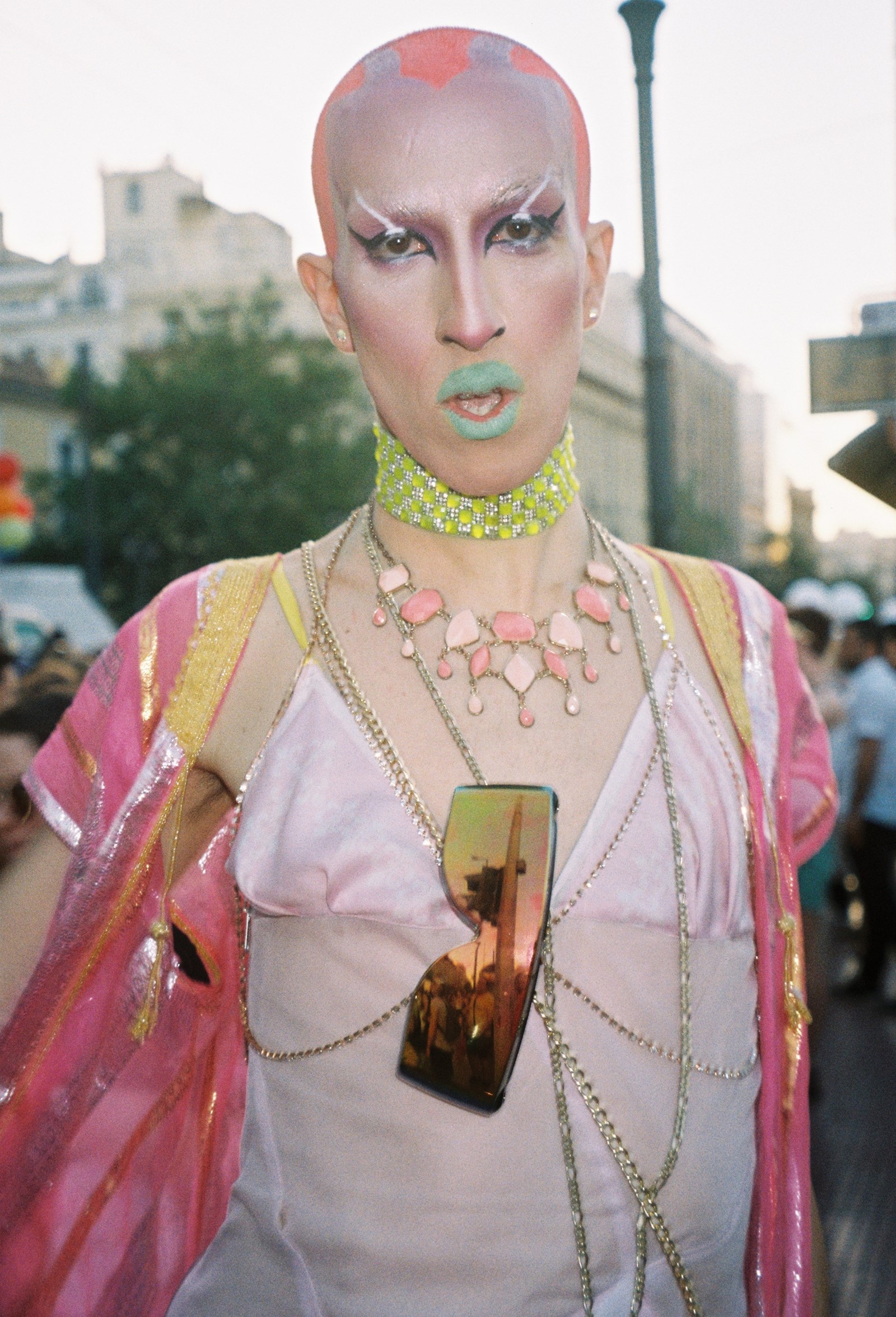
LGBTQ+ Athens is situated between an ancient past that essentially birthed homoeroticism and a present reality where queer Athenians have to rally for equal rights. Its rich history and tense present (alongside a ten-year economic crisis) make the community one of brave pride and resilience as they fight for a future.
Athens-born, Berlin-based photographer Spyros Rennt shone a light on this reality this year with his photobook Another Excess, which explored themes of nudity and unity, and the way in which the two ideas thrive within queer communities across the globe. This photo is particularly symbolic for how far the battle for equal rights has come in Greece. This queen is sporting an absolute look which screams pride – something just a decade ago would have been nearly impossible to pull off on the streets of Athens. This image is a thank you to the queer ancestors of Greece’s past, and a nod to its gleaming future. (Lexi Manatakis)
KIA LABEIJA’S “KIA LABEIJA FEATURING THE MOON”, FROM THE SERIES KIA LABEIJA
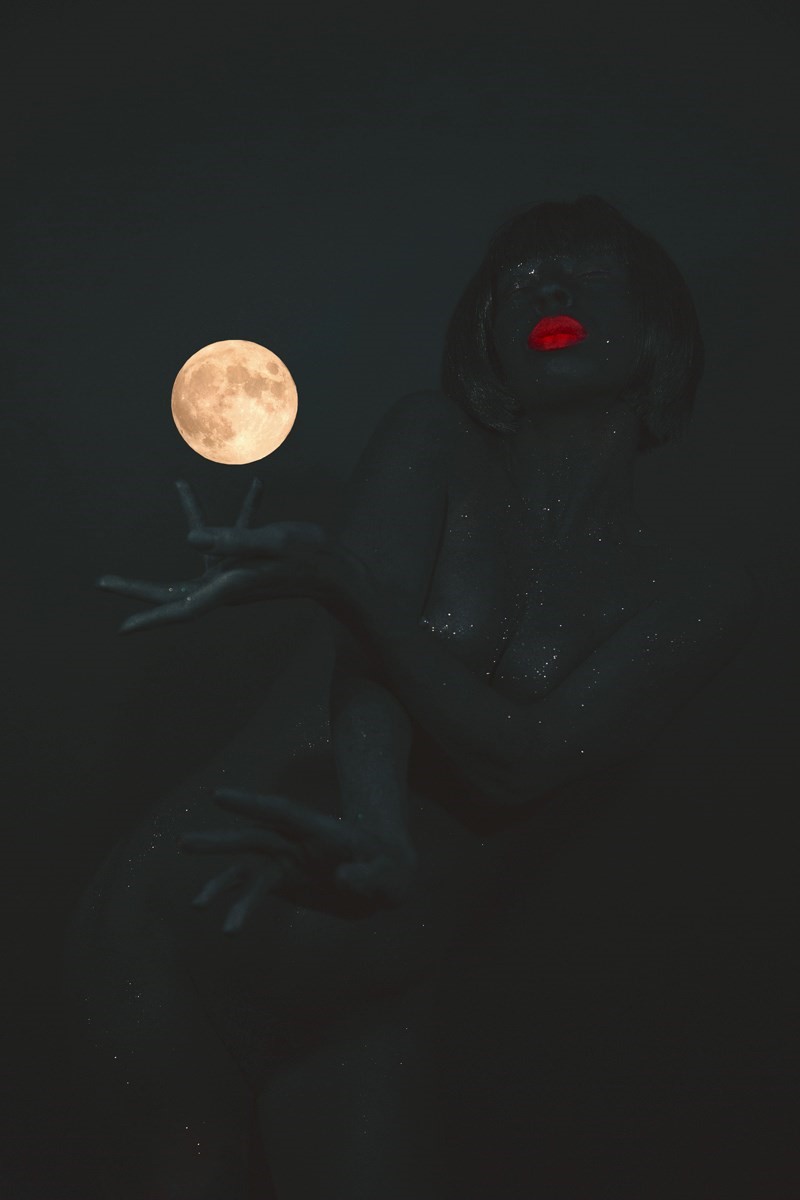
Thirty years ago in 1988, artist David Wojnarowicz appeared at ACT UP’s Food and Drug Administration (FDA) protest with a jacket that read “If I die of Aids – forget burial – just drop my body on the steps of the F.D.A”. In this moment, art proved a key in which activists could humanise the voice and plight of the crisis. Given that 37 million people still live with Aids today, in radical artist and voguer, Kia LaBeija’s photo “Kia LaBeija Featuring The Moon”, we see the same power that shone via Wojnarowicz. Through the use of geometric voguing poses and the colour red as a symbol of solidarity, this photo becomes a space for LaBeija to draw on her experiences as a woman of colour living with Aids.
“The world heavily stigmatises people living with HIV/Aids, and I’d like to break that mould,” LaBeija told Dazed. “The beginning of the Aids epidemic was devastating, traumatic, and heartbreaking, but, because of those who fought for treatment, healthcare, and visibility, folks like me are living healthy lives. The early days left a long-lasting impression, and I think it’s important to honour those incredibly sad stories – but also to tell new ones.” (Lexi Manatakis)
MATTHEW MORROCCO’S “KEVIN AND BILL”, FROM THE SERIES COMPLICIT

Despite considerable progress of LGBTQ+ rights and representation, some people remain invisible even within their own marginalised group. As a young gay man, photographer Matthew Morrocco knew that was the case for older gay men. Mainstream representations of male homosexuality often rely on youthful, white, ‘masculine’ bodies. Complicit chronicles the five years Morrocco spent photographing himself with older gay men in New York City. Imitating the languid poses of old classical paintings, a medley of queer elders look into the photographer’s lens, or sometimes lay with him, in a series of generation-spanning portraits.
In this dreamlike image are Kevin and Bill, one with his back facing the camera, the other gazing straight into it. With this work, Morrocco not only takes part in documenting an important element of queer lives and history, but also grapples with society’s inability to see people above a certain age as sexual beings who desire affection and companionship. (Clara Hernanz)
CHLOÉ JAFE, FROM THE SERIES 命預けます

Japanese organised crime syndicates known as “yakuza” are deeply embedded in the country’s business affairs and culture. Their stories are documented by television dramas, tabloid magazines, mangas, video games, and even their own film genre: brutal, blood-spattered pieces referred to as “yakuza movies”. However, stories about the women – the wives, daughters, mistresses, and bar hostesses – that orbit around the criminal activities of the male gangsters are rarely heard of. Watching The Yakuza Wives series, a rare TV show that focuses on women’s stories, photographer Chloé Jafé wondered if such women truly existed in the yakuza society or whether they were fictive fabrications of pop culture. She moved to Japan and figured she’d find out for herself. After months of working at a Yakuza-owned hostess club and nearly giving up, she met a mob boss who enabled her to gain access. The intimate portraits of 命預けます, or “I give you my life”, are the result of her encounters with yakuza women and the friendship that sprung from them. (Clara Hernanz)
RAFAEL MARTINEZ’S “GUILLERMO”, FROM THE SERIES AQUÍ TAMBIÉN HAY SUEÑOS
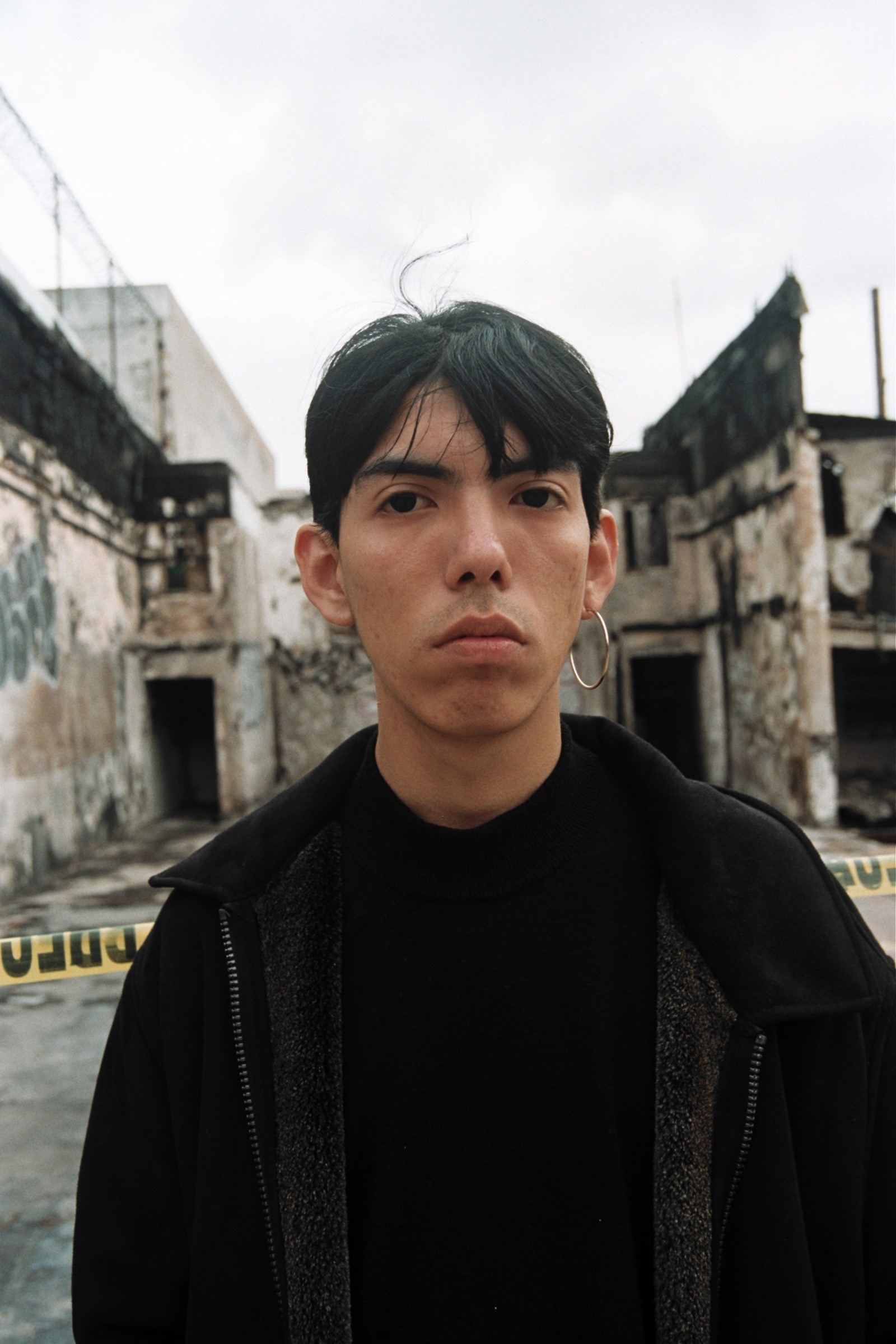
In 1993, tear gas – which effects include severe eye irritation and difficulty breathing – was made illegal in the use of warfare. However, it can still be legally used to disperse ‘civil uproar’. On November 26, Donald Trump administered tear gas on innocent migrants (including children) trying to cross the border from Mexico to America. When we compare the illegality of tear gas in war to its liberal and abhorrent use on the border, photographer Rafael Martinez’s photo series, Aquí También Hay Sueños (There are Dreams on This Side Too) – which spotlights Mexican youth resisting Trump’s border – has never been more important.
This specific image of Guillermo, a 19-year-old aspiring stick-and-poke tattooist, is a visual reminder of what's at the core of the wildly dehumanised debate: a fight for basic human freedom, and the future of young people wanting to live and dream without political violence. While Donald Trump continues to prove a complete lack of empathy, Martinez tender images bring much needed human emphasis back to the migration debate, by giving it a voice. (Lexi Manatakis)
SARAH BAHBAH’S “FEELINGS. FUCK THEM”

American photographer Sarah Bahbah made it very clear in her interview with Dazed earlier this year: she speaks her mind. “Transparency and indulgence are my two major themes,” she explained. “For me, it’s super important to always make sure that I’m expressing myself. Especially as a Palestinian, I was suppressed and repressed for my entire upbringing. In my family, we’re very conditioned to just stay silent as women.”
That’s why her sultry, stylised, extremely Instagrammable photos are usually emblazoned with dry captions that literally put their hearts on their sleeves. The subtitles often add a new or challenging undertone to her chic photos – alone, they might seem like fashion shoot outtakes, but coupled with the captions, they become a poignant and funny reminder that what is going on under the surface may not always be what it seems. (Aimee Cliff)
JORDAN BAUMGARTEN, FROM THE SERIES GOOD SICK
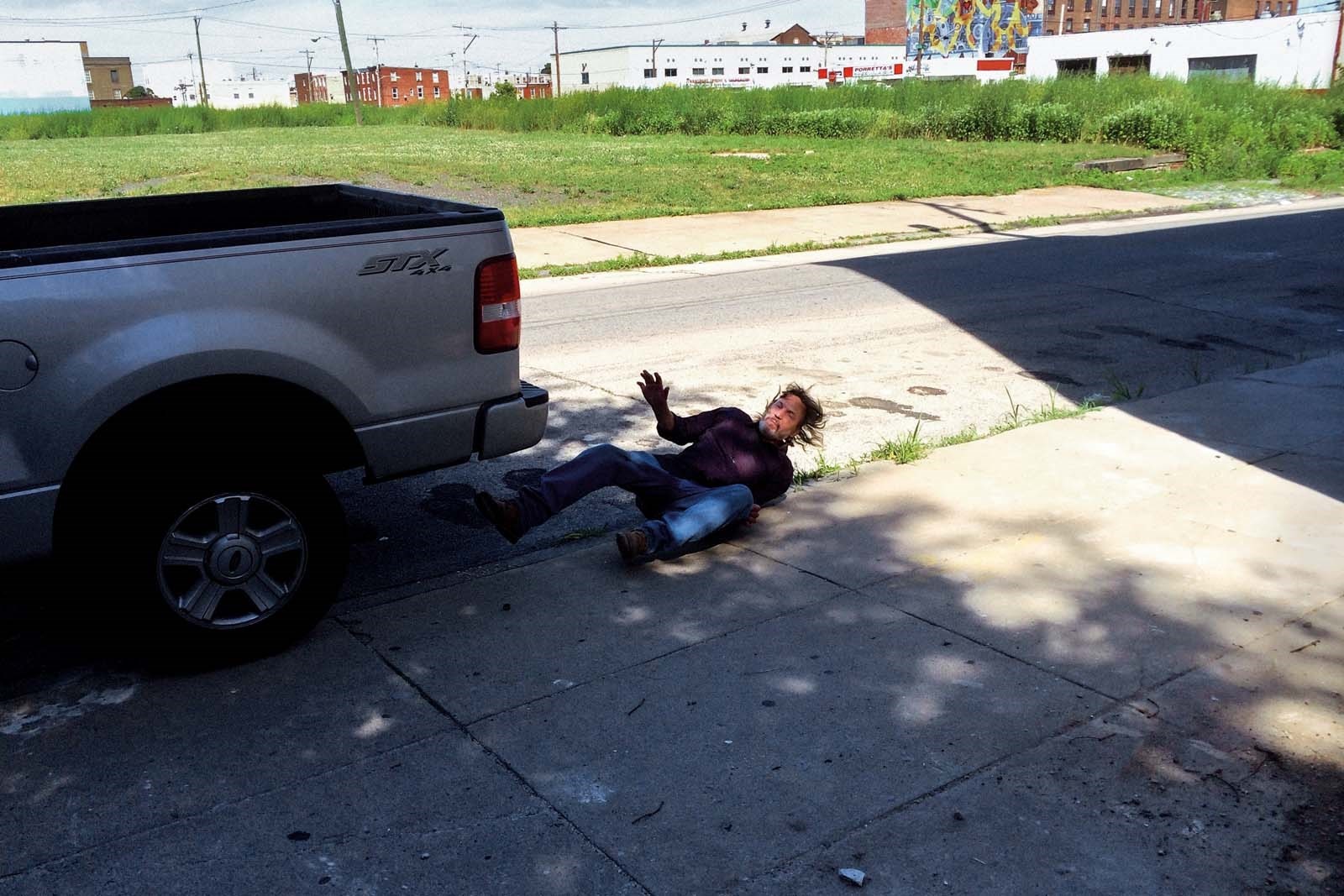
Though focused in one location, Jordan Baumgarten’s Good Sick speaks of a problem that is taking place all over the US. According to the US Department of Health & Human Services (HHS), more than 130 people died every day from opioid-related drug overdoses during 2016 and 2017 in America. The opioid crisis has been widely reported on in national and international media, but the people concerned by it often remain faceless, nameless individuals.
“The reality is, they’re normal people – brothers, sisters, college graduates… sometimes their life has been amazing, other times, their life has been terrible,” the photographer told Dazed. These images might seem voyeuristic, Baumgarten himself confesses, but there is a belief that they will bring about change. Recent history provides some examples of photography’s impact. For example, Nick Ut’s “Napalm Girl” contributed to stopping the war in Vietnam. Here, Baumgarten’s intimate portraits combat simplistic media narratives surrounding addicts, and in doing so open a difficult, but honest dialogue about addiction. (Clara Hernanz)
DAZED LABS

This one is more symbolic than the other images in this list. Dazed+Labs launched in November this year, and in nine weeks, myself (arts & culture editor, Ashleigh Kane) and photographer Eddie Otchere taught a group of young people how to take photographs, how to develop them in a makeshift kitchen darkroom, and how to curate them. Overall, our goal was to ensure they told their own stories in their own ways. Taking place a stone’s throw from Grenfell Tower, at the wonderful Rugby Portobello Trust, with the help of incredible photographers such as Nadine Ijewere, Bolade Banjo, Bafic, and Aliyah Otchere, we feel we’ve successfully armed a small group of the next generation of image-makers with the creative confidence and skills that they need to define their futures. Watch this space. (Ashleigh Kane)
